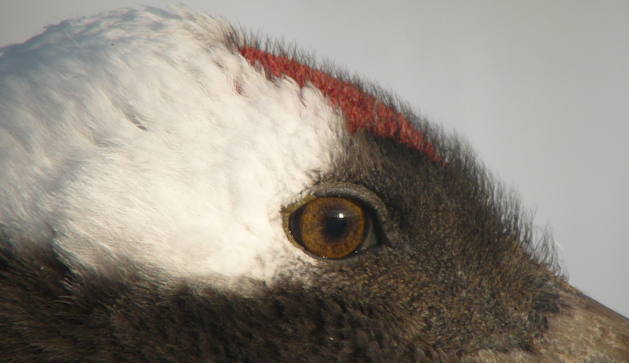Birdwatching in the Tokyo Area
For visitors on business in Tokyo for a few days, or while stopping by in the capital during trips elsewhere, there are several places right in the heart of the city where you can do some birdwatching.
With Tokyo's super-efficient transport system, getting from your hotel to one of these places is straightforward. If you are hesitant, ask the concierge at your hotel to write down the route and the destination in Japanese.
An alternative — but more expensive — way is to jump into a taxi and have a chauffeur drive you to your desired destination.
The adjacent prefectures of Chiba, Ibaraki and Saitama also have a number of excellent birdings spots, so also check those pages.
Scroll down for information on:
- Central Tokyo: The Imperial Palace Moat
- Central Tokyo: Yoyogi Park & Meiji Shrine
- Central Tokyo: Aoyama Cemetery
- Central Tokyo: Meguro Nature Park (Institute for Nature Study)
- Central Tokyo: Ueno Park & Shinobazu Pond
- Southwest Tokyo: Senzoku-ike Park
- Kasai Rinkai Koen
- Mt Takao (Takao-san)
- Tama River (Tamagawa) at Marukobashi
- Tama River (Tamagawa) at Seisekisakuragaoka
- Tokyo Port Wild Bird Park
Central Tokyo: The Imperial Palace Moat 皇居の堀 大手町 桜田門
In central Tokyo, within walking distance of the Imperial Hotel and other hotels in the Marunouchi business district, the Imperial Palace moat is always worth a look, especially between November and March when millions of wild ducks are wintering in Japan.
There are always a few ducks and grebes there, as well as a few Grey Heron or Great Egret or Little Egret. During the winter if you look hard you can often spot a Common Kingfisher perching on a branch over the water.
Eastern Buzzard and Northern Goshawk are resident in the extensive grounds of the Imperial Palace — the residence of the emperor and empress — so you may see one fly over the trees as you walk around the perimeter.
The best area for birding is probably around the southwest side of the palace, from around the Hibiya Park corner or Sakuradamon gate area, past the National Theatre and Supreme Court building, and as far as one of the palace entrances on the south side of the British Embassy.
This is where most of the ducks congregate during the winter months, but there are many different areas to check as the moats are divided into several sections by access bridges to the palace and the birds move around to where food is most easily accessible.
 Just opposite the National Theatre it is often possible to look down onto the moat and see a mixed flock of Falcated Duck, Gadwall and Common Coot feeding on water plants below you.
Just opposite the National Theatre it is often possible to look down onto the moat and see a mixed flock of Falcated Duck, Gadwall and Common Coot feeding on water plants below you.
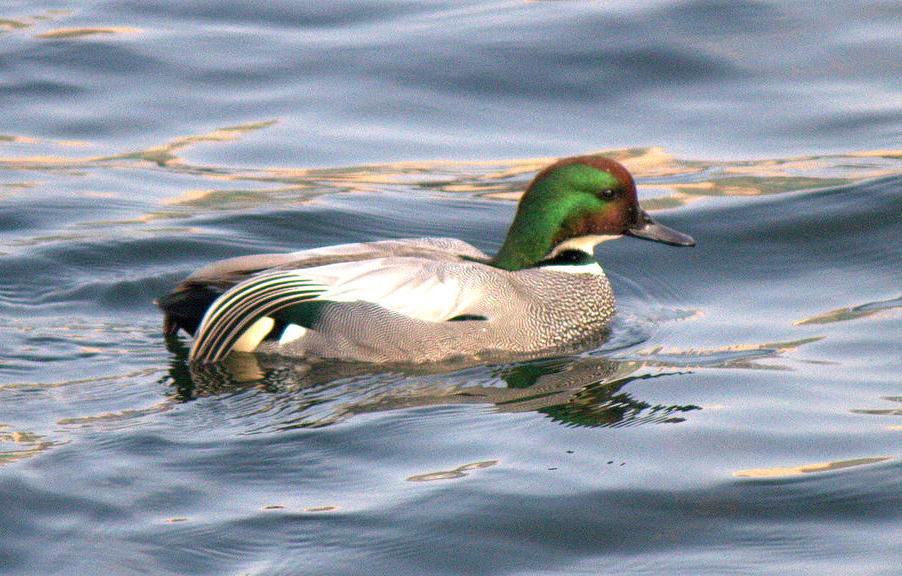 Sometimes, the gorgeously plumed Falcated Duck can be seen close to the sidewalk near Sakuradamon – making it possible to obtain excellent views of this beautiful Asian speciality.
Sometimes, the gorgeously plumed Falcated Duck can be seen close to the sidewalk near Sakuradamon – making it possible to obtain excellent views of this beautiful Asian speciality.
There are often other species around such as Eastern Spot-billed Duck, Mallard, Northern Shoveler, Eurasian Wigeon and Eurasian Teal, and diving ducks include Common Pochard, Tufted Duck and sometimes Common Goldeneye.
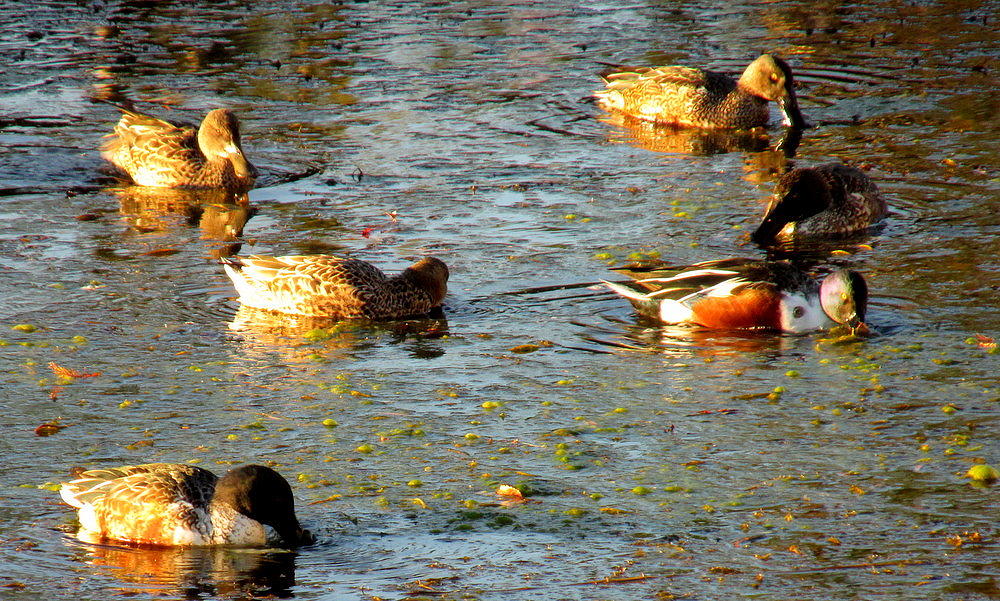 Small numbers of Mandarin Duck can be seen during the winter but they are more likely to be found on the north side — the Kudanshita/Budokan area — and often perch unobtrusively on branches over the water or hide in holes in the walls of the moat.
Small numbers of Mandarin Duck can be seen during the winter but they are more likely to be found on the north side — the Kudanshita/Budokan area — and often perch unobtrusively on branches over the water or hide in holes in the walls of the moat.
Little Grebe and Great Cormorant are both resident, and there are also a few not-so-wild Mute Swan swimming around the moat sections near Marunouchi where the tourists go.
Gulls are often a feature of sections of water around the Marunouchi area — mostly Vega Gull and Black-headed Gull — but also a few Slaty-backed Gull and Black-tailed Gull. Once, an American Herring Gull was even photographed there.
Around the Imperial Palace is a 5-km jogging course, and at whatever time of the day (or night) you visit, there are always runners passing by — so please be considerate of them if you are carrying a tripod for your camera or telescope.
National Theatre moat: 35.681840, 139.745812
Central Tokyo: Yoyogi Park & Meiji Shrine 代々木公園 明治神宮
If you look at a map of Tokyo, here and there are small pockets of green – undeveloped, concrete-free land preserved as parks and gardens.
Among the better known ones, and often on the tourist itinerary, are Ueno Park, Shinjuku-gyoen, Yoyogi Park, Inokashira Park, the East Garden of the Imperial Palace and Hibiya Park, probably the oldest public park in the capital (it was created in 1903).
One of the biggest green areas, Yoyogi Park, is located just south of Shinjuku, the capital's main sub-centre and home to City Hall, a million shops and restaurants (and as many people at the weekend!) and many hotels. This is also where Meiji Shrine, a Shinto shrine erected a century ago to enshrine the souls of Emperor Meiji and Empress Shoken, is located.
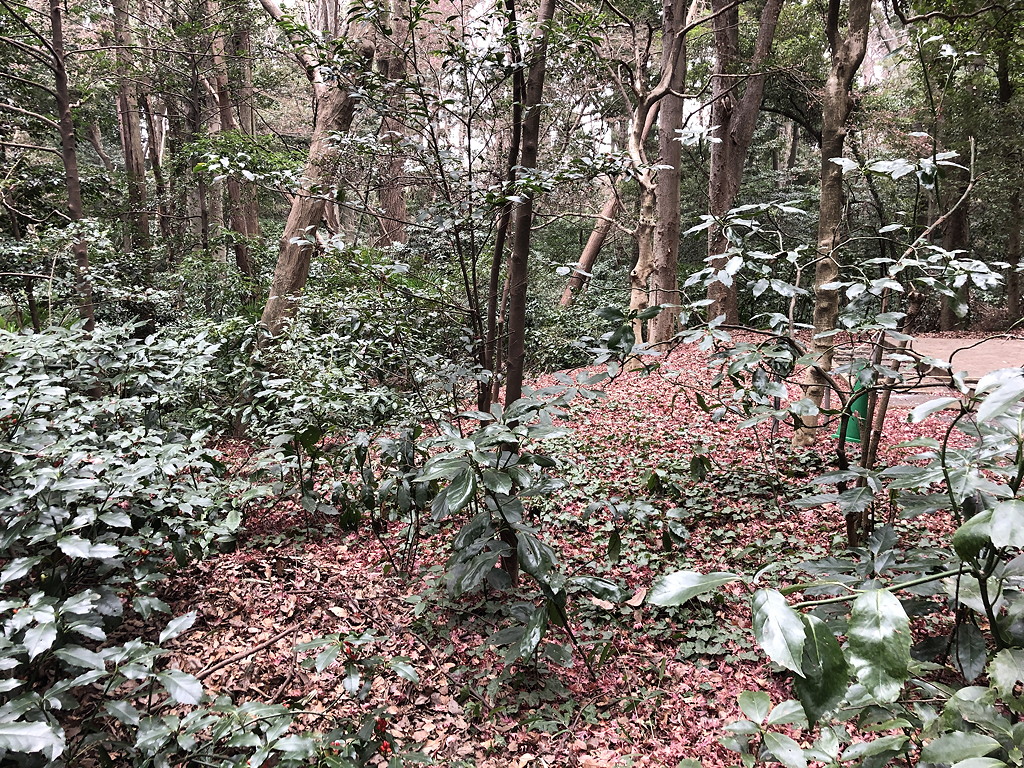
Although Yoyogi Park is right in the “middle” of Tokyo – and consequently has no shortage of visitors wishing to escape the hustle and bustle of a hectic world beyond the tree trunks – it is possible, especially in the early morning, to spend some time quietly walking around the forested areas and not see too many other people.
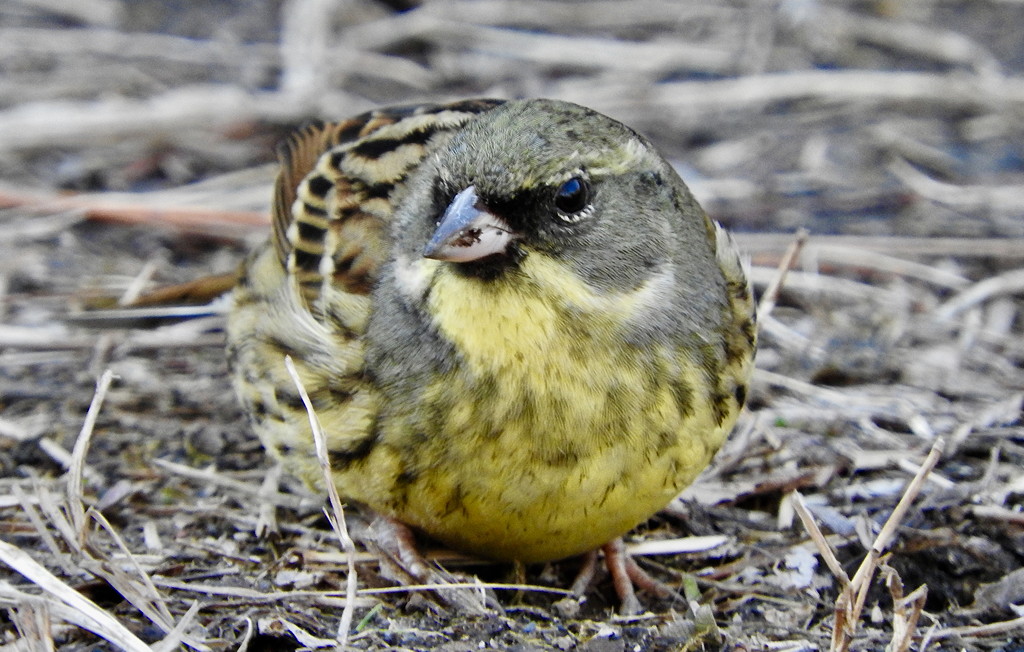
During the winter hundreds of Japanese Crow roost near the west side of the shrine, and at times they make so much noise it is hard to hear if anything else is calling! During the spring and autumn migrant flycatchers and warblers occasionally drop in, but there are thousands of trees and bushes so finding them presents a challenge.
The best time for birding is during the colder winter months, when thrushes and buntings are around, and on the small pond near the Treasure Museum, a small flock of Mandarin Duck is usually present, tucked up on branches or stones close to the small bridge.
On a calm and sunny winter's morning a walk through the forest often produces Masked Bunting and Grey Bunting, as well as Pale Thrush and Dusky Thrush. White's Thrush is a bonus bird, but in the half light under the tall trees, finding them is challenging to say the least!
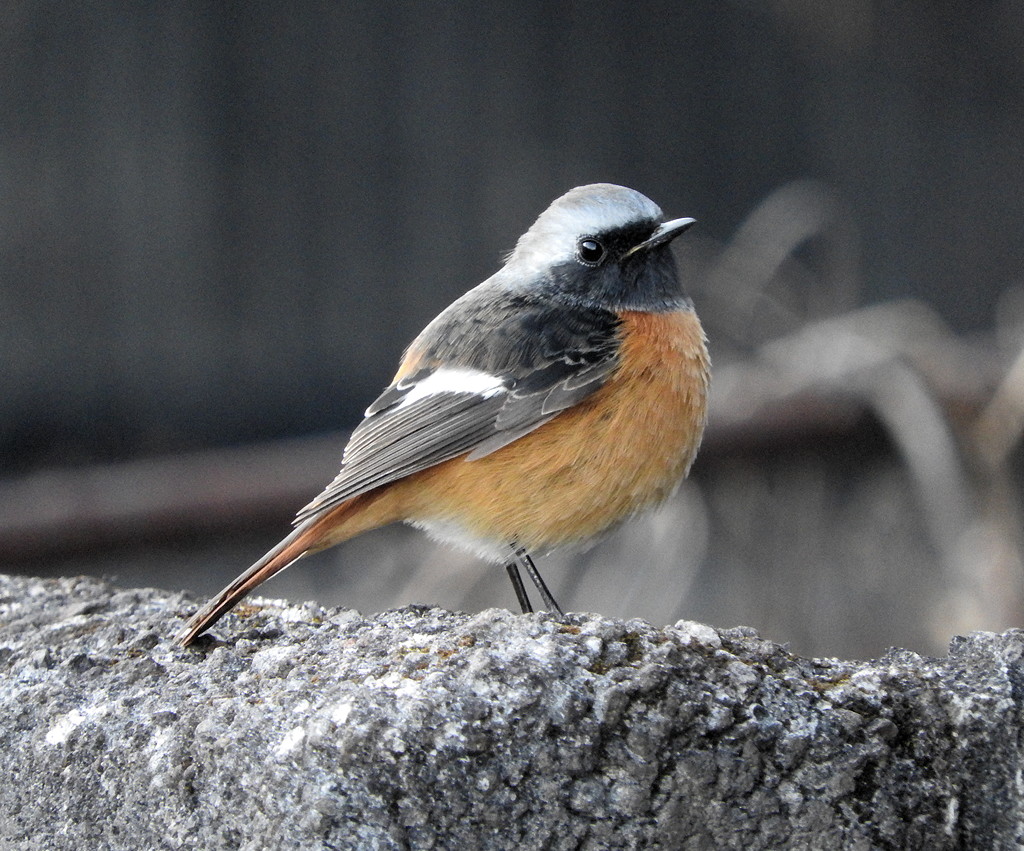 There are usually one or two Red-flanked Bluetail or Daurian Redstart where there are bushes and open areas outside the wooded areas.
There are usually one or two Red-flanked Bluetail or Daurian Redstart where there are bushes and open areas outside the wooded areas.
In the open areas of grass, Hawfinch and Oriental Greenfinch can be found feeding around the edges, and Bull-headed Shrike sometimes appear. Oriental Turtle Dove, Brown-eared Bulbul, Japanese Pygmy Woodpecker, Varied Tit, Eurasian Tree Sparrow, White Wagtail and Japanese White-eye can be seen anywhere in the park at any time of the year.
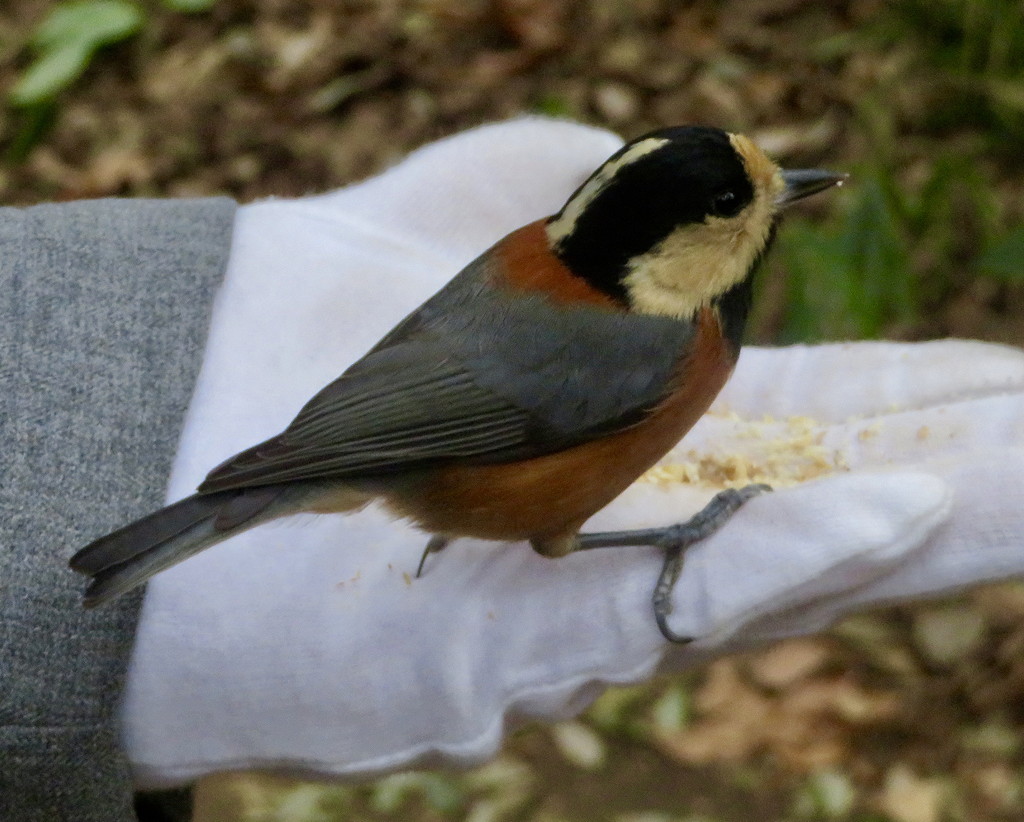 Around the shrine or over the open grassy areas, look for Northern Goshawk flying overhead. If one is nearby, there is usually a tell-tale mob of cawing crows around it announcing its presence.
Around the shrine or over the open grassy areas, look for Northern Goshawk flying overhead. If one is nearby, there is usually a tell-tale mob of cawing crows around it announcing its presence.
Although it does not have a long list of rarities to its name, Japanese Scops Owl has occasionally been found in winter and sometimes even seen Tanuki (Raccoon Dog) is sighted.
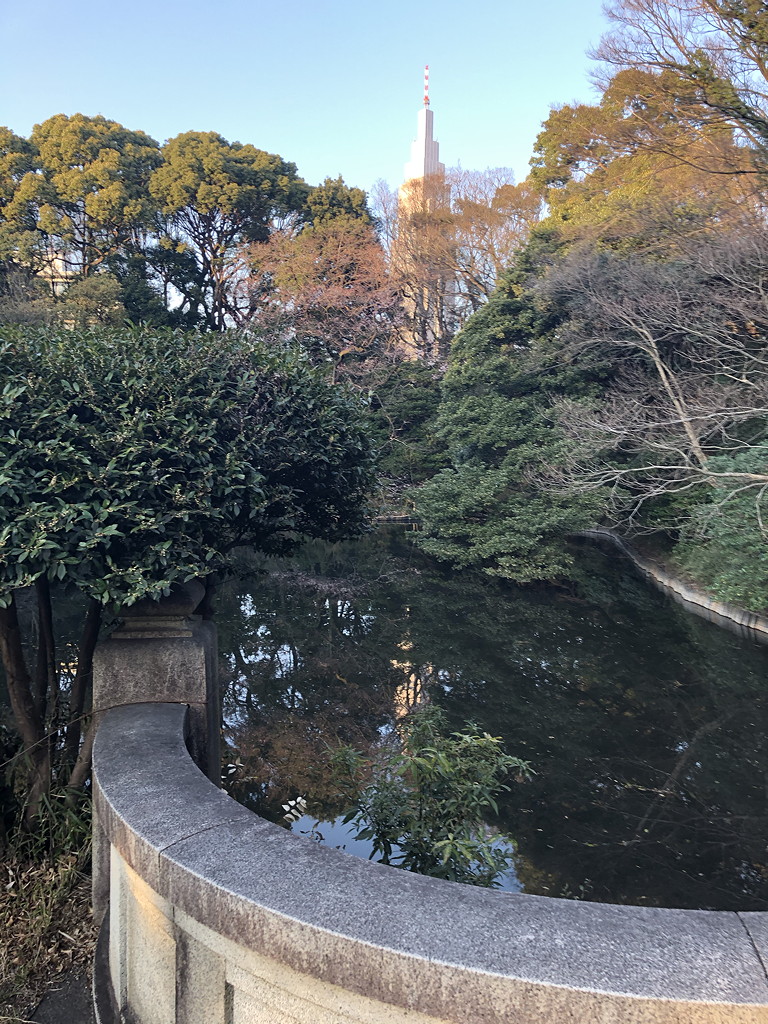
Access:
From Shinjuku it is about a 15-minute walk to the north (Yoyogi) entrance, and at the south end, access is from JR Harajuku Station or from the adjoining Meijijingumae subway station. There are also two entrances on the west side (the nearest station is Sangubashi on the Odakyu Line).
Admission is free to the main park and shrine, but a fee is charged to enter the inner iris garden when the flowers are in bloom. The shrine area is closed at night.
http://www.meijijingu.or.jp/english/index.html
Map: Mandarin Duck pond 35.679199, 139.699206
Central Tokyo: Aoyama Cemetery 青山霊園
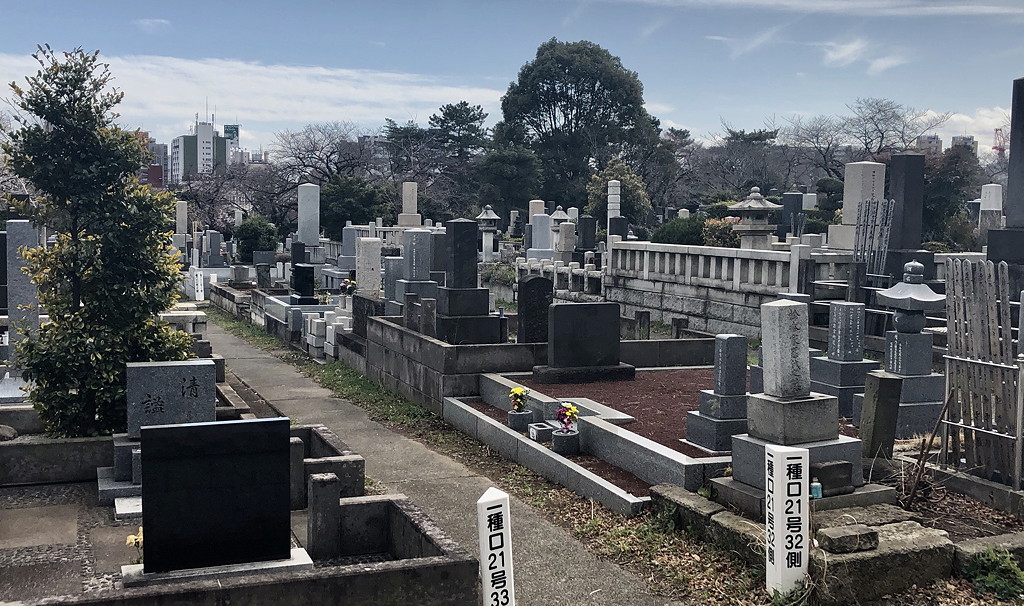 Cemeteries may not be at the top of the location list for birders but with an abundance of trees, shrubs — and peace — they are good places to watch birds.
Cemeteries may not be at the top of the location list for birders but with an abundance of trees, shrubs — and peace — they are good places to watch birds.
In central Tokyo the extensive Aoyama Cemetery is one such place. It is within easy walking distance of several subway stations and a short taxi ride from Shibuya, Roppongi or Akasaka.
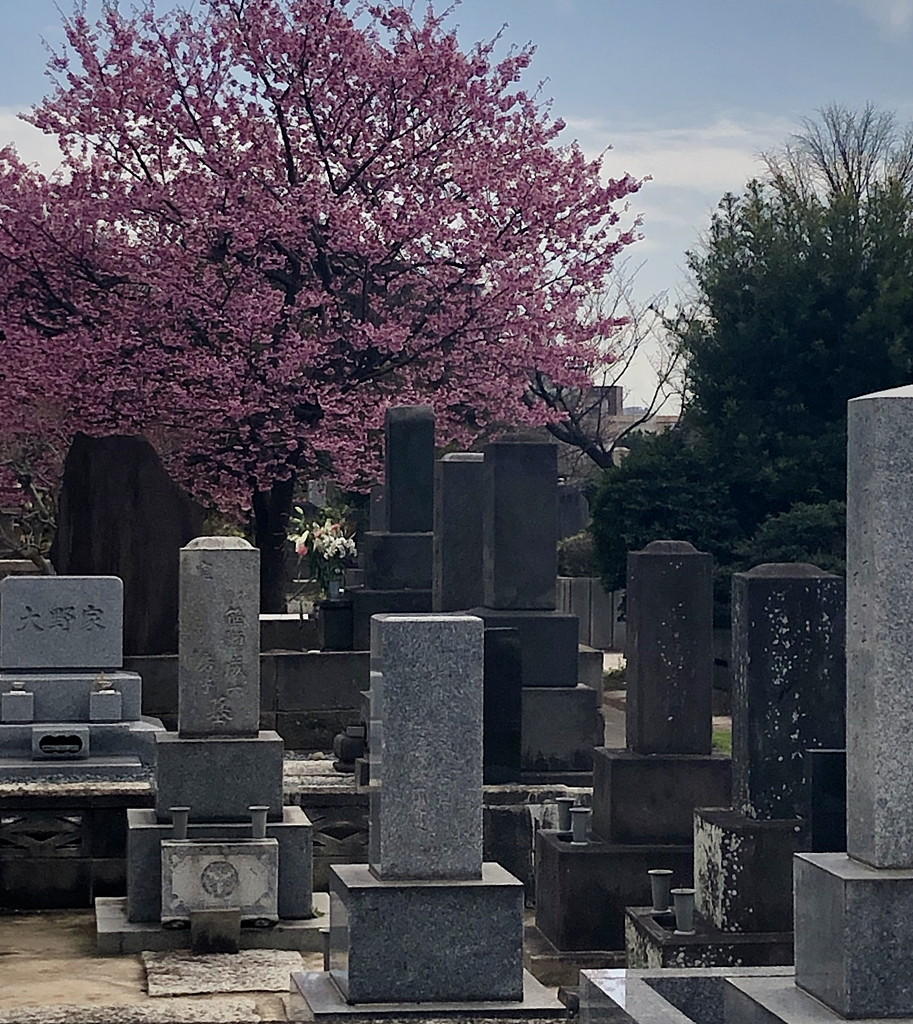 As with just about any park in any Japanese city, you are never far from a Japanese Crow, Brown-eared Bulbul or Eurasian Tree Sparrow. Varied Tit is usually present at the north end of the cemetery, and both Japanese Tit and Long-tailed Tit are often here too.
As with just about any park in any Japanese city, you are never far from a Japanese Crow, Brown-eared Bulbul or Eurasian Tree Sparrow. Varied Tit is usually present at the north end of the cemetery, and both Japanese Tit and Long-tailed Tit are often here too.
The cemetery is also a reliable spot for Azure-winged Magpie, and during the winter Dusky Thrush and Pale Thrush can often be found feeding among the family monuments.
During migration seasons look out for passerines such as flycatchers and warblers.
Birds of prey that have been seen there include Eurasian Sparrowhawk and Eastern Buzzard. Even Grey-faced Buzzard is a possibility during the autumn and Northern Goshawk could turn up at any time.
This cemetery has many flowering cherry trees (sakura) making it a popular sightseeing spot during the spring blossom season. The blossoms, and the insects attracted by their nectar, often attract birds.
Access:
The nearest subway stations are Gaienmae, Aoyama Itchome, Nogizaka and Omotesando.
Map: 35.667239, 139.721945
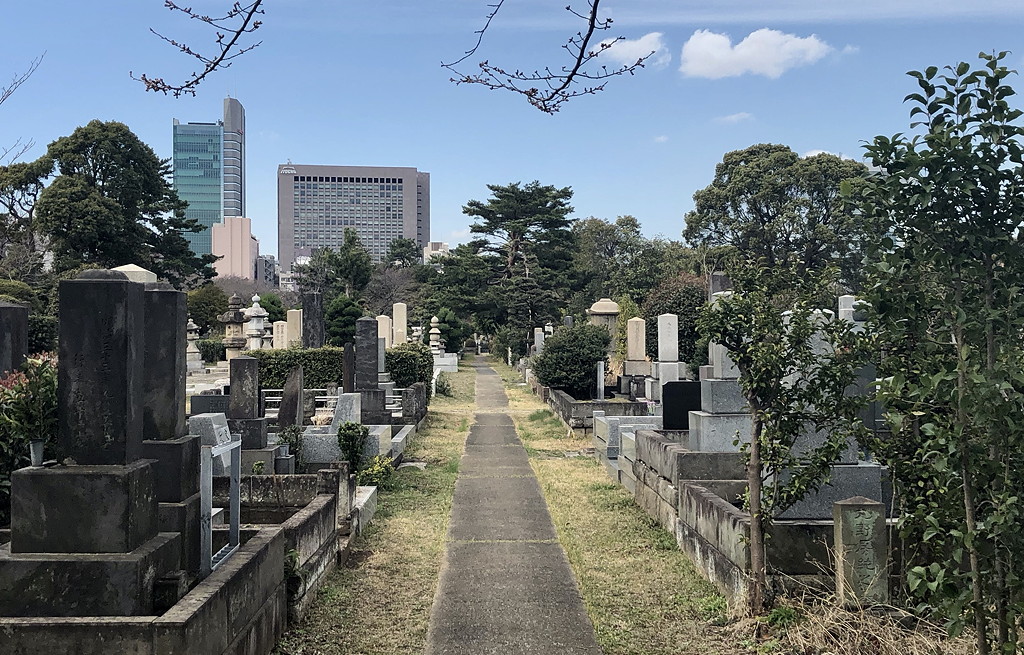
Central Tokyo: Meguro Park (Institute for Nature Study 自然教育園)
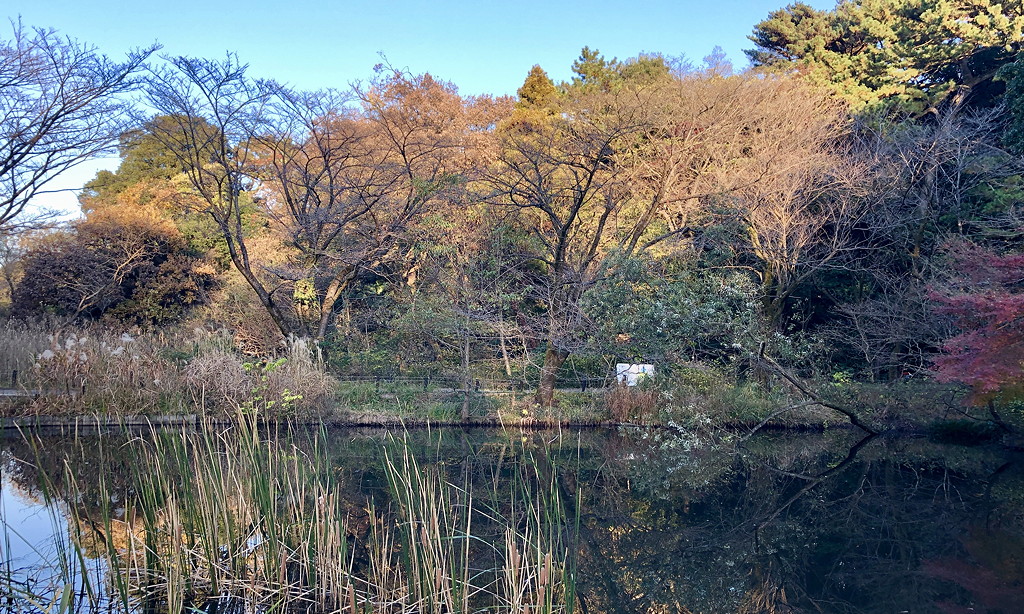 Meguro Park is situated a few hundred metres from Meguro Station in central Tokyo. It is another green oasis in the bustling capital. It is a smaller version of Yoyogi Park, which is located a few kilometres to the north, and, like its larger cousin, it also has a plentiful supply of resident crows and Brown-eared Bulbuls!
Meguro Park is situated a few hundred metres from Meguro Station in central Tokyo. It is another green oasis in the bustling capital. It is a smaller version of Yoyogi Park, which is located a few kilometres to the north, and, like its larger cousin, it also has a plentiful supply of resident crows and Brown-eared Bulbuls!
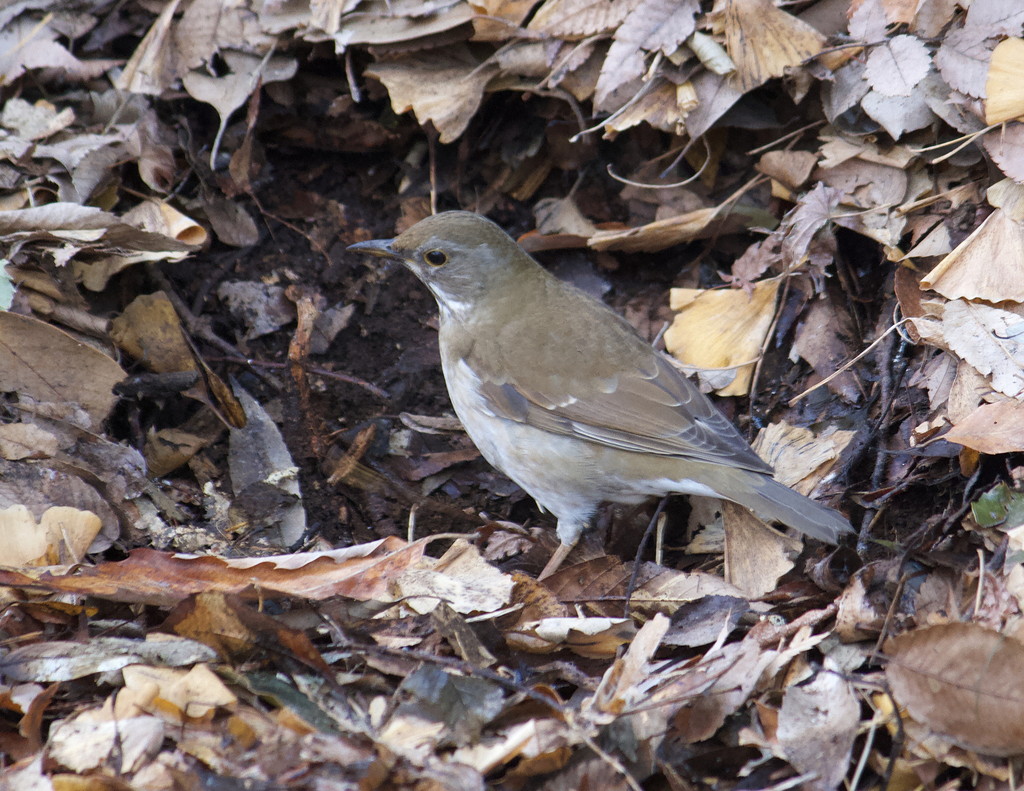 Over 500 years ago the land on which the park now stands belonged to the estate of a nobleman, and in more recent times it was an imperial property. The park has mature woodland with plenty of understory — making it a good place for Pale Thrush and Grey Bunting during winter — and also a few small ponds and marshy areas.
Over 500 years ago the land on which the park now stands belonged to the estate of a nobleman, and in more recent times it was an imperial property. The park has mature woodland with plenty of understory — making it a good place for Pale Thrush and Grey Bunting during winter — and also a few small ponds and marshy areas.
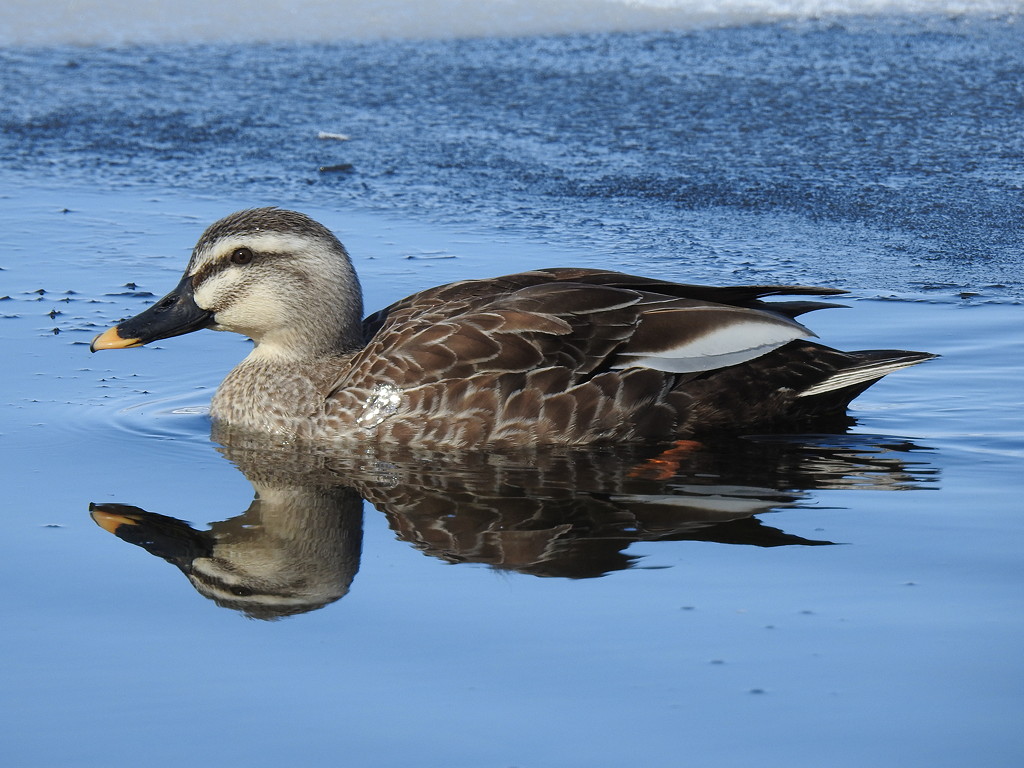 The ponds attract a few wintering ducks. The commonest are Eastern Spot-billed Duck and Mallard, but occasionally Mandarin Duck visit too. Common Kingfisher can often be found during the winter.
The ponds attract a few wintering ducks. The commonest are Eastern Spot-billed Duck and Mallard, but occasionally Mandarin Duck visit too. Common Kingfisher can often be found during the winter.
Many of the park's trees and shrubs are labelled in hiragana, giving an opportunity to learn tree names and Japanese at the same time. The extensive plantings of cherry trees make it a popular spot for cherry-blossom viewing in spring.
 As with Yoyogi Park and Meiji Shrine, Meguro Nature Park also boasts resident Northern Goshawk. If you notice the behaviour of the ducks and crows changing suddenly watch out for this dramatic raptor, which may be causing the panic.
As with Yoyogi Park and Meiji Shrine, Meguro Nature Park also boasts resident Northern Goshawk. If you notice the behaviour of the ducks and crows changing suddenly watch out for this dramatic raptor, which may be causing the panic.
During migration seasons occasinal migrants drop in and both Narcissus Flycatcher and Grey-streaked Flycatcher have both been recorded in the park. At another small park and tgemple no more than 500 m away, Japanese Paradise Flycatcher, Blue-and-white Flycatcher, and Eastern Crowned Warbler have also been seen, so these and other migrating passerines may well be found in Meguro Park during spring and autumn.
Access:
The park opens from 09:00 to 16:30 during winter (1 September 1 to 30 April) and from 09:00 to 17:00 during summer (1 May to 31 August). It is closed on Mondays (or the following day if Monday is a national holiday), the day after national holidays (except Saturdays and Sundays), and 28 December until 4 January.
Entrance costs ¥320 for adults and students. It is free for school pupils and those 65 and above (ID required).
The nearest JR station (about 15 minutes by foot) is Meguro, on the Yamanote Line. The park is also within walking distance from Shirokanedai and Meguro subway stations, which are on the Nanboku and Mita lines. Buses from Meguro Station stop close to the park entrance (Shirokanedai 5-chome bus stop). No parking is available for private vehicles.
Tel: 03-3441-7176; Homepage: http://www.ins.kahaku.go.jp/english/
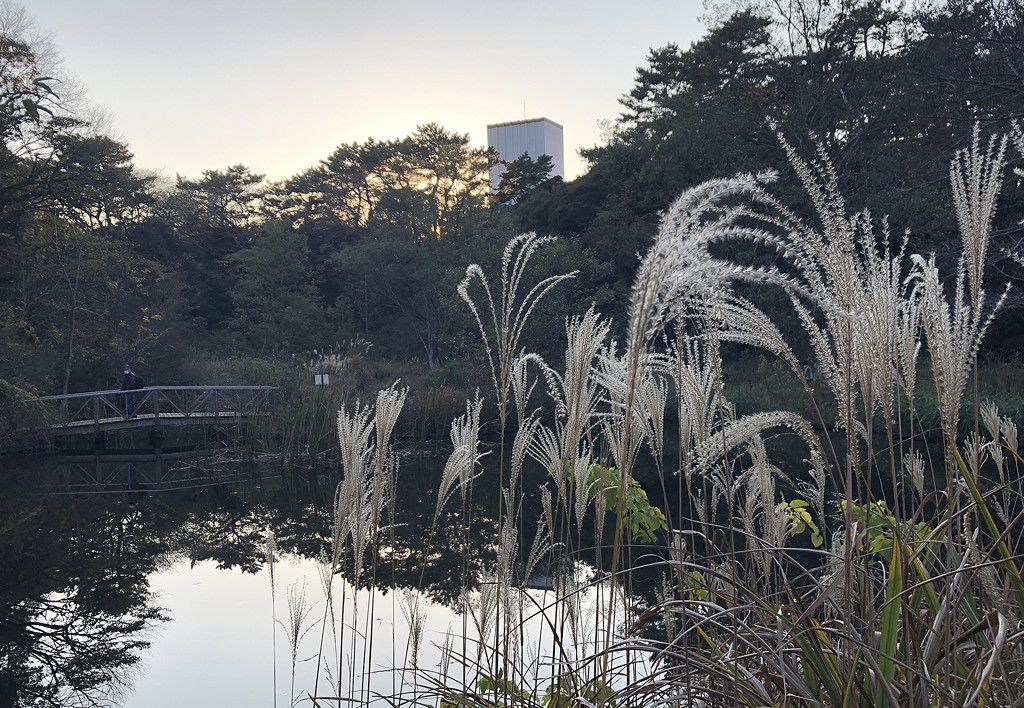
Central Tokyo: Ueno Park & Shinobazu Pond 上野公園
不忍池
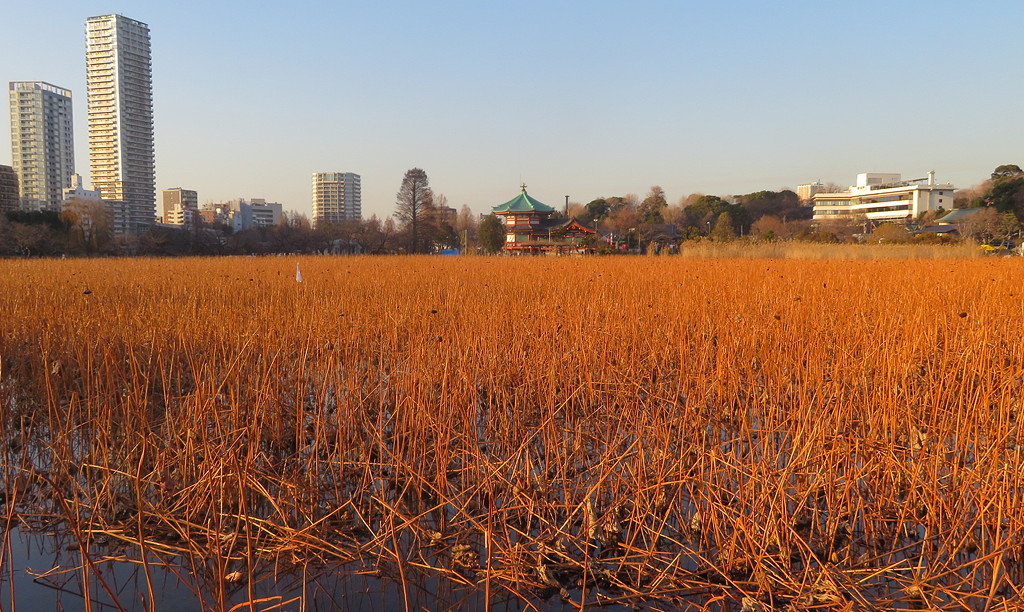 This pond, which adjoins Ueno Zoological Gardens, is a pond in two halves: the open boating pond on the west side, and the lotus-filled area on the east.
This pond, which adjoins Ueno Zoological Gardens, is a pond in two halves: the open boating pond on the west side, and the lotus-filled area on the east.
Summer is the time to see the pastel-pink lotus blooms, but there are few birds at that season. However, during the colder winter months it is a good place to look for a range of ducks and gulls.
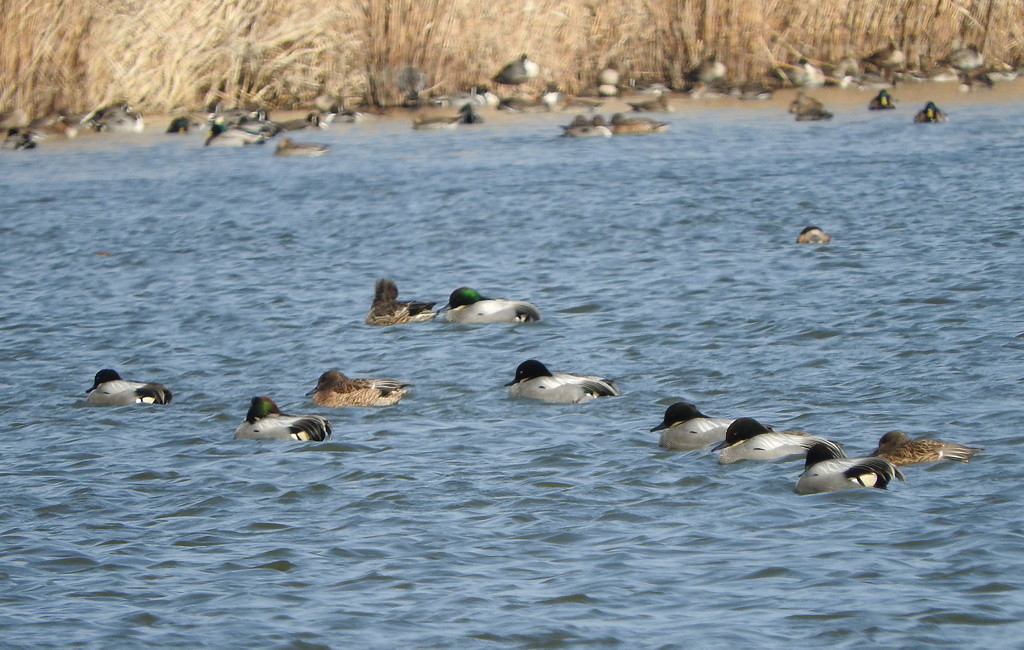 The pond attracts a small number of diving ducks such as Tufted Duck and Common Pochard, and it is also a very good spot for Falcated Duck, although only small numbers of this species can be found here, whereas at the Imperial Palace moat, a few kilometres to the south, numbers sometimes climb into three figures.
The pond attracts a small number of diving ducks such as Tufted Duck and Common Pochard, and it is also a very good spot for Falcated Duck, although only small numbers of this species can be found here, whereas at the Imperial Palace moat, a few kilometres to the south, numbers sometimes climb into three figures.
At any time of the day during the winter there are usually a few gulls bathing. Look out for Vega Gull, Slaty-backed Gull, Common Gull and Black-headed Gull.
Among the dried lotus leaf stems on the eastern pond, Northern Shoveler, Eurasian Teal and Mallard rest during the day, and there are usually a few Common Moorhen and Eurasian Coot feeding out in the open. Within the confines of the zoo, there is a large Great Cormorant colony which can be easily seen and heard (and smelled!) as you walk around the north side of Shinobazu Pond.
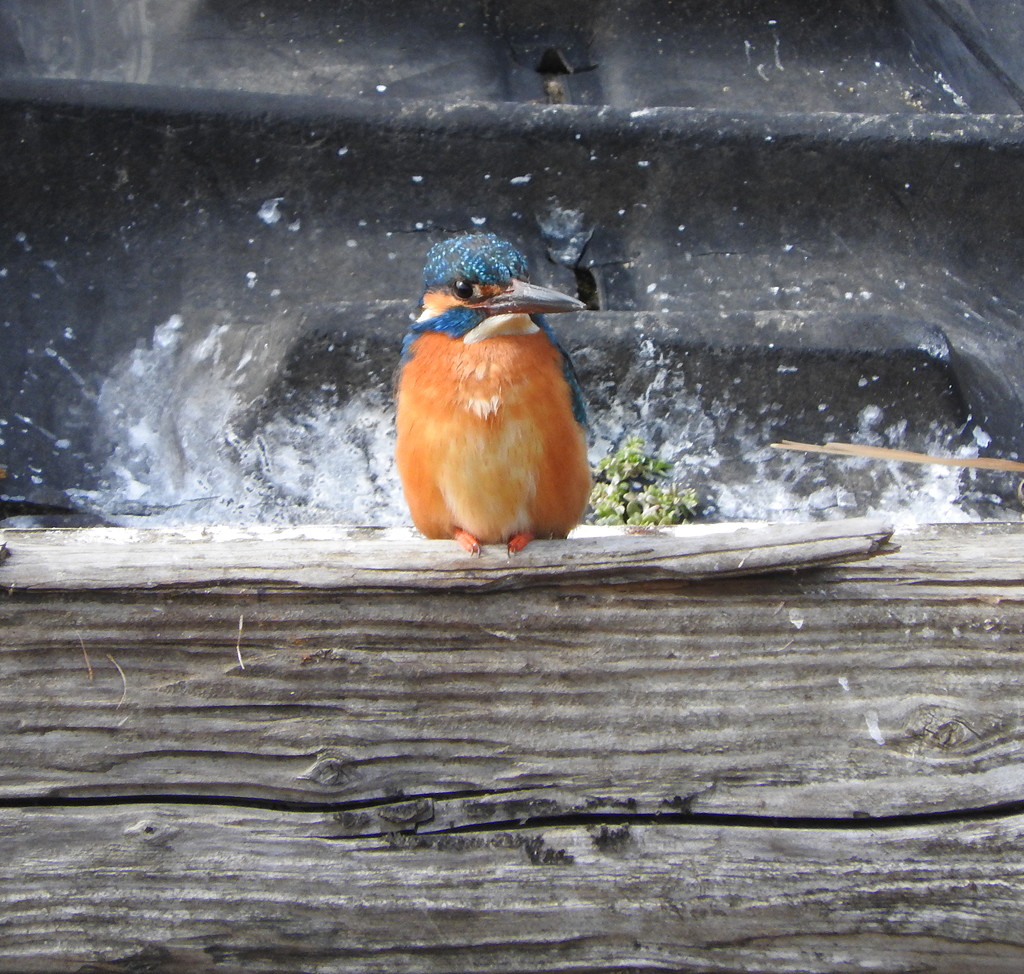 One or two Common Kingfisher are resident during the winter, and Black-crowned Night Heron and sometimes Grey Heron, Great Egret and Little Egret feed there, too.
One or two Common Kingfisher are resident during the winter, and Black-crowned Night Heron and sometimes Grey Heron, Great Egret and Little Egret feed there, too.
Past rarities at Shinobazu Pond have included Baer's Pochard, Ring-necked Duck, Lesser Scaup, and Hoopoe.
In Ueno Park, three species dominate: Japanese (Large-billed) Crow, Brown-eared Bulbul and Eurasian Tree Sparrow.
Azure-winged Magpie is resident in the area, but not always on view. Unless they are calling, they can be easily missed. And, with hundreds of sakura trees blooming in the spring, the park is a magnet for Japanese White-eye and bulbuls, which feed on the nectar.
The open grassy areas dotted with bushes are good places to see thrushes during the winter, with Dusky Thrush and Pale Thrush being the commonest. White's Thrush and Brown-headed Thrush, Daurian Redstart and Bull-headed Shrike may also be found.
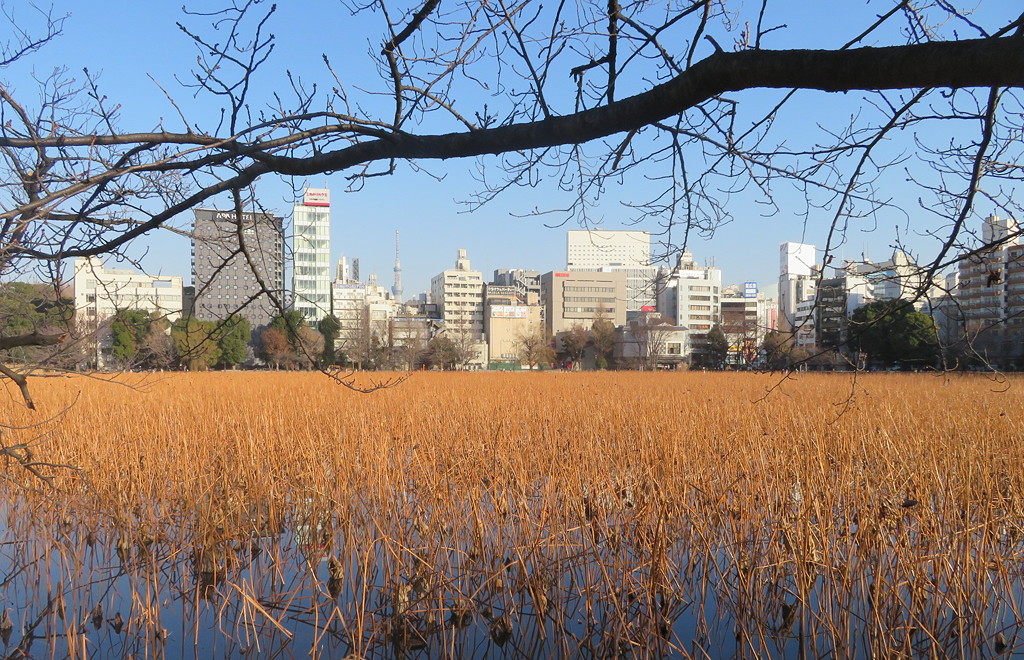
Access:
Ueno Station is four stops north of Tokyo Station on the Yamanote and Keihin-Tohoku lines, and trains on the Ginza and Hibiya subway lines also stop there. Shinobaze Pond is about a 15-minute walk to the west, in the direction of Bentendo temple.
Inside Ueno Park there are several large museums. Toilet facilities are available in the park and at Shinobazu Pond.
Map: 35.711795, 139.770631
Southwest Tokyo: Senzoku Pond 洗足池公園
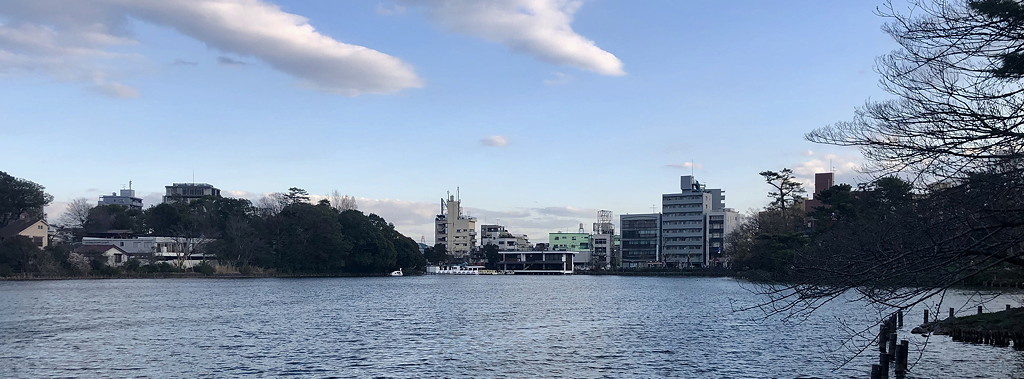 Tokyo boasts many parks, from tiny "pocket" parks and treeless kids' play areas to large green areas such as Ueno Park, Shinjuku-gyoen and Yoyogi Park.
Tokyo boasts many parks, from tiny "pocket" parks and treeless kids' play areas to large green areas such as Ueno Park, Shinjuku-gyoen and Yoyogi Park.
In the southwest part of Tokyo, between Shinagawa and the Tama River, lies Senzoku-ike Park, a small recreation area in Ota Ward. Comprising a pond-cum-boating lake, it is an oasis of green in a crowded residential area.
Highlights here include a breeding pair of Japanese Lesser Sparrowhawk, during the summer, and Common Kingfisher which frequent the area place during the winter. Both species attract a band of photographers.
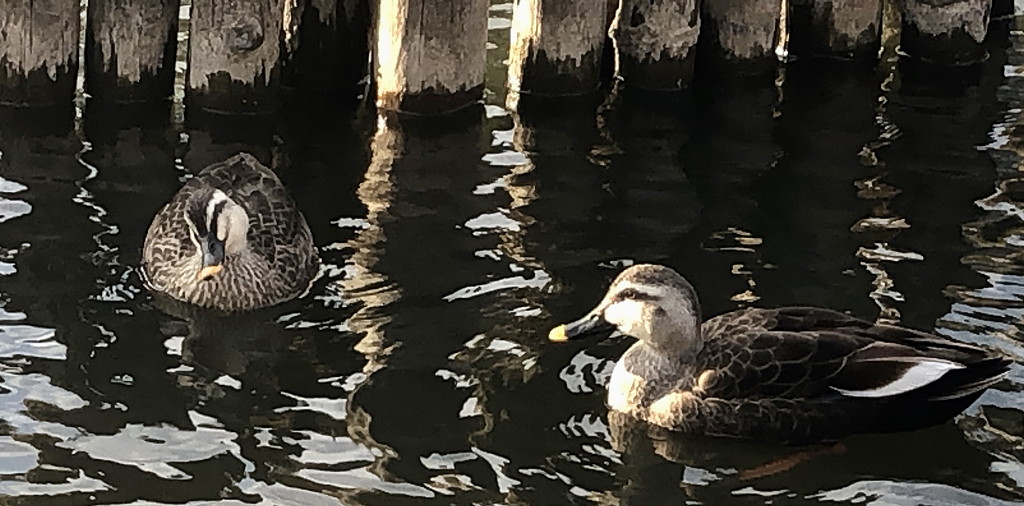 Other birds that can be seen here include Eastern Spot-billed Duck and Tufted Duck during winter, along with Little Grebe, and several of the commoner parkland birds such as Japanese Pygmy Woodpecker, Hawfinch, Oriental Turtle Dove, and Azure-winged Magpie. The introduced Ring-necked Parakeet that makes Tokyo home is also a daily visitor to the park.
Other birds that can be seen here include Eastern Spot-billed Duck and Tufted Duck during winter, along with Little Grebe, and several of the commoner parkland birds such as Japanese Pygmy Woodpecker, Hawfinch, Oriental Turtle Dove, and Azure-winged Magpie. The introduced Ring-necked Parakeet that makes Tokyo home is also a daily visitor to the park.
Access:
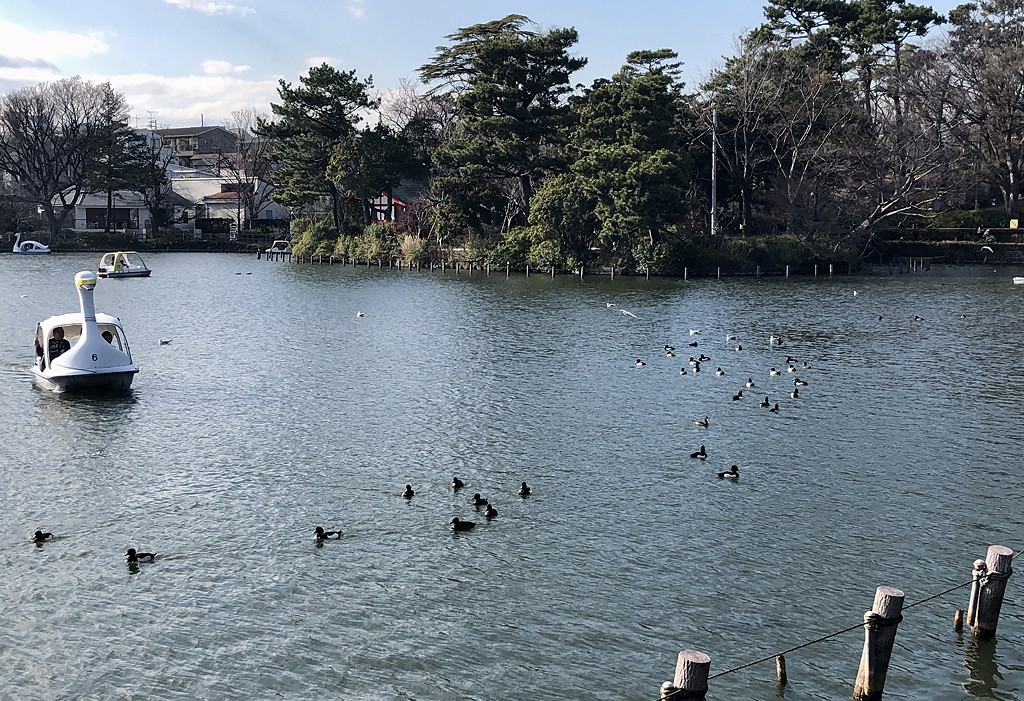 The nearest station, just south of the park, is Senzoku-ike on the Tokyu-Ikegami Line from Gotanda Station (change from JR Yamanote Line). About a 20-minute walk to the northwest is Ookayama Station on the Tokyu Meguro Line (change from JR Yamanote Line trains at JR Meguro Station).
The nearest station, just south of the park, is Senzoku-ike on the Tokyu-Ikegami Line from Gotanda Station (change from JR Yamanote Line). About a 20-minute walk to the northwest is Ookayama Station on the Tokyu Meguro Line (change from JR Yamanote Line trains at JR Meguro Station).
Entry to the park (Map: 35.601871, 139.690356) is free.
Kasai Rinkai Koen 葛西臨海公園
Kasai Rinkai Park, one of the many public parks of Tokyo, is located on the east side of the city, close to Tokyo Disneyland on the west side of the Edogawa River. It is easy to reach via the JR Keiyo Line and JR Musashino Line trains from Tokyo Station. The ride takes about 30 minutes on a local train, and Kasai Rinkai Koen Station is right next to the entrance of the park.
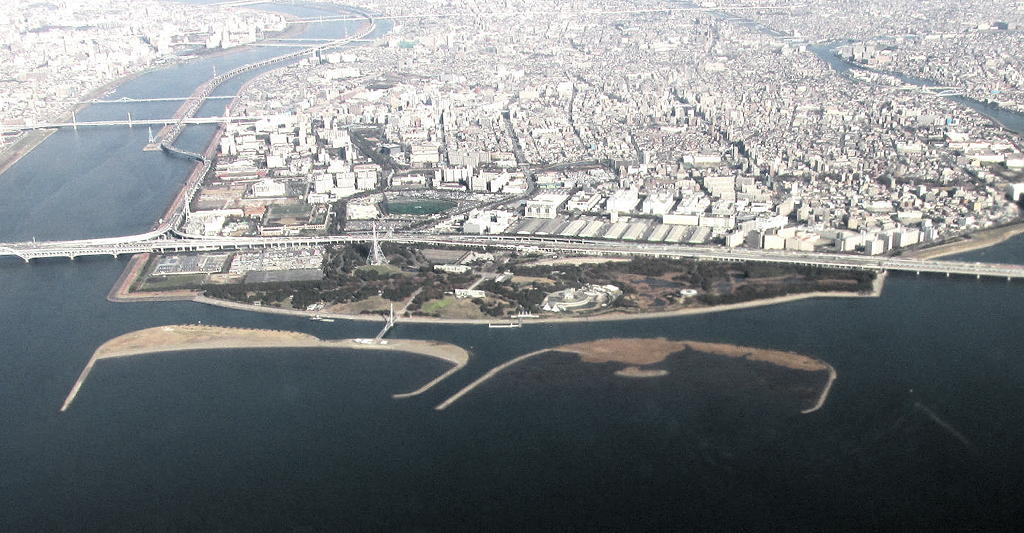 There is also an aquarium (Tokyo Sea Life Park) inside the park, a hotel, and toilet facilities in several places. At ground level at the station a convenience store sells food and drink if you have not brought your own.
There is also an aquarium (Tokyo Sea Life Park) inside the park, a hotel, and toilet facilities in several places. At ground level at the station a convenience store sells food and drink if you have not brought your own.
Kasai Rinkai Koen is a good place in winter, when there are large numbers of grebes, ducks and gulls just offshore in Tokyo Bay, and the birdwatching area (ponds and bushes) at the east end attracts good numbers of birds.
Rarities have included Asiatic Dowitcher, Baer's Pochard, Baillon's Crake and Little Curlew, among others, and Saunders's Gulls occasionally stop by during the winter months.
It is also a good site for Azure-winged Magpie, although they can be hard to track down among the trees and bushes if they are silent. They are often around the Ferris wheel area, the car park on the west side, or at the birdwatching pond at the east end.
During winter several species of thrush — White's, Dusky, Pale and Brown-headed — can be seen, as well as Daurian Redstart and two or three species of bunting. At this time of the year, there are usually a couple of Bull-headed Shrikes in residence, and Northern Goshawk and Eastern Buzzard can often be seen near the birdwatching centre.
On clear, calm mornings during the autumn, visible diurnal migration can sometimes be observed. Then, hirundines, bulbuls, larks and buntings, and occasional raptors, can be seen flying overhead.
Within the park there are two main places to watch birds: On the islands in Tokyo Bay, reached by crossing Kasai-Nagisa Bridge (the gate opens at 0900 and closes at 1700), and at the birdwatching ponds towards the east.

The West Island is open and you can wander around (the grassy area is sometimes good for pipits and larks or buntings, as well as for roosting waders, but there is a lot of disturbance from day visitors). During the early summer part of West Island is roped off and Little Tern decoys are set out in a bid to attract them to breed, but there is probably too much disturbance for anything positive to happen.
East Island is off-limits and inaccessible. It is on the latter where many birds can be seen — shorebirds, herons, spoonbills, egrets, and birds of prey — but, unfortunately, seeing them is often a challenge as the causeway at the east side of West Island where you can walk to overlook East Island is the same height as the stones on East Island, so it is hard or even impossible to see many parts where the birds are feeding or resting. There are also large signs blocking parts of the view as well.
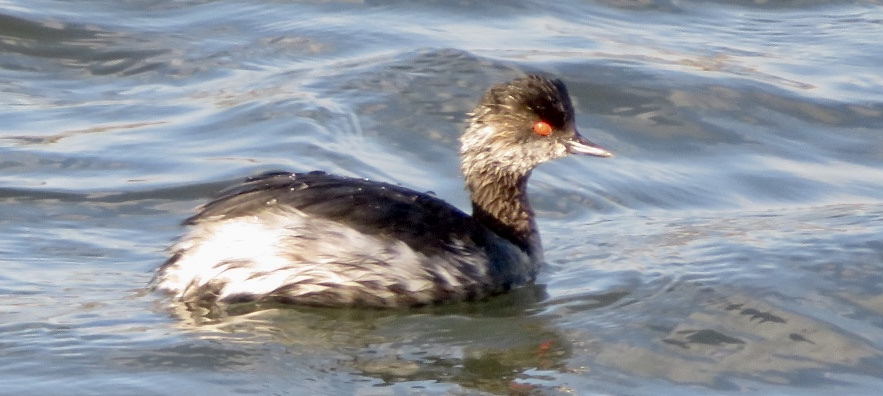 During the late autumn and early winter the wintering flock of Greater Scaup gradually builds up, and by mid-winter there are huge rafts of several thousand birds offshore. Among the flocks are likely to be several hundred Great Crested Grebe, and smaller numbers of Black-necked Grebe, too.
During the late autumn and early winter the wintering flock of Greater Scaup gradually builds up, and by mid-winter there are huge rafts of several thousand birds offshore. Among the flocks are likely to be several hundred Great Crested Grebe, and smaller numbers of Black-necked Grebe, too.
 If the tide is out, large numbers of gulls sometimes congregate on the East Island mudflats. The main species are Slaty-backed, Vega, Black-tailed and Black-headed. A visit to Kasai Rinkai Koen is never complete without seeing hundreds of Great Cormorants fishing in Tokyo Bay or flying toward nearby Gyotoku, where there is a colony.
If the tide is out, large numbers of gulls sometimes congregate on the East Island mudflats. The main species are Slaty-backed, Vega, Black-tailed and Black-headed. A visit to Kasai Rinkai Koen is never complete without seeing hundreds of Great Cormorants fishing in Tokyo Bay or flying toward nearby Gyotoku, where there is a colony.
In the winter there is often a spoonbill around, and both Black-faced and Eurasian can be seen, often asleep and at a distance, on the concrete sea defences at the tip of East Island. Very occasionally spoonbills can be seen feeding at the main pond.
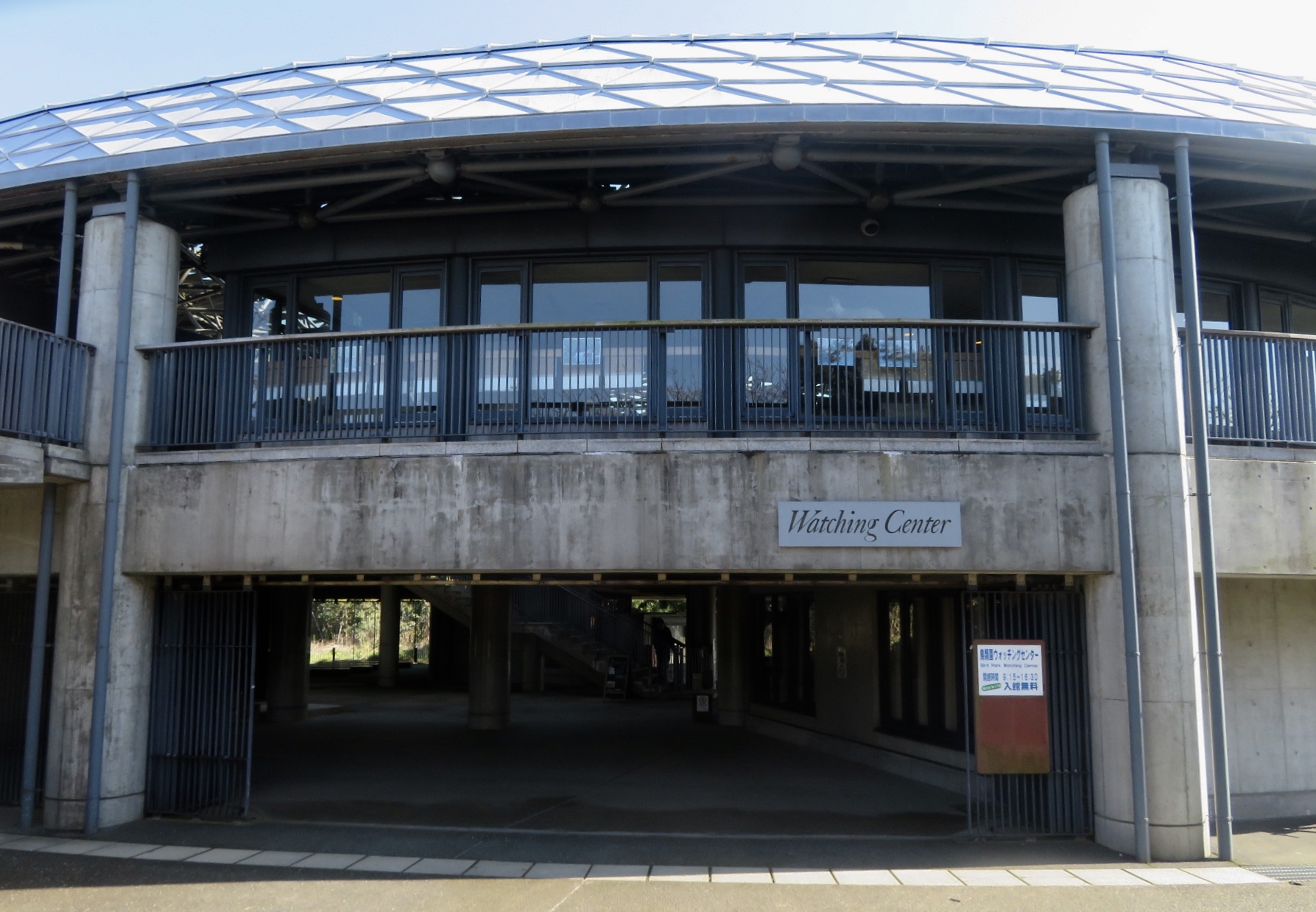 The “watching centre” is a two-storey grey-domed building situated next to the ponds on the east side of Kasai Rinkai park; it opens at 0900. There are usually a couple of rangers present to help with identification or give you the latest news, but it will probably be in Japanese rather than in English. Pamphlets (with photos of some birds and limited English-language information) are available there.
The “watching centre” is a two-storey grey-domed building situated next to the ponds on the east side of Kasai Rinkai park; it opens at 0900. There are usually a couple of rangers present to help with identification or give you the latest news, but it will probably be in Japanese rather than in English. Pamphlets (with photos of some birds and limited English-language information) are available there.
On the ground floor toilet facilities are available, and from the second floor, it is possible to look out over the main pond to the west, and also the shallow pond on the east side. Most, if not all, the action, is on the main pond.
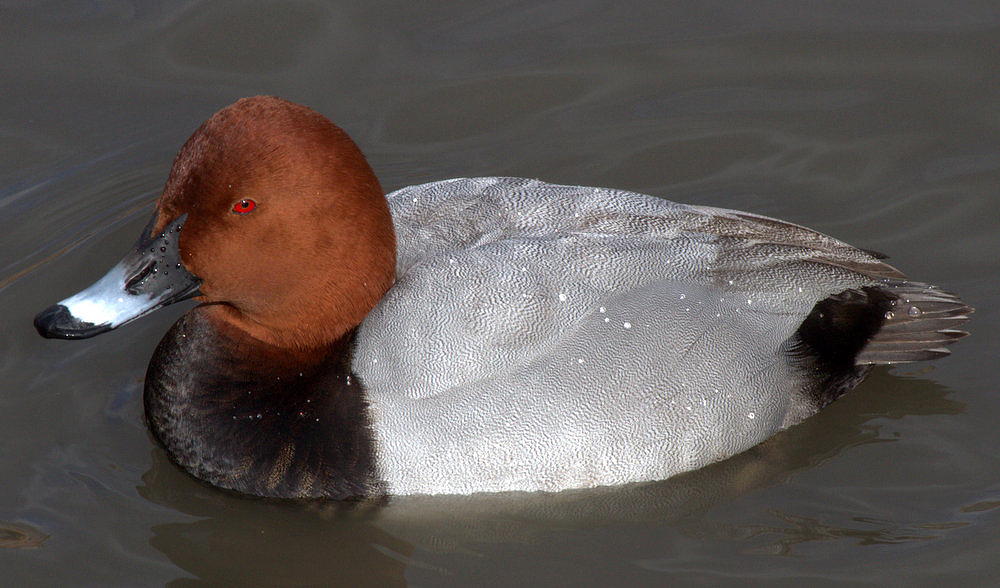 During the winter months several hundred ducks gather — mostly Common Pochard and Tufted Duck — to roost here.
During the winter months several hundred ducks gather — mostly Common Pochard and Tufted Duck — to roost here.
There are also a few dabbling ducks such as Gadwall, Northern Shoveler, Eastern Spot-billed Duck and Eurasian Teal.
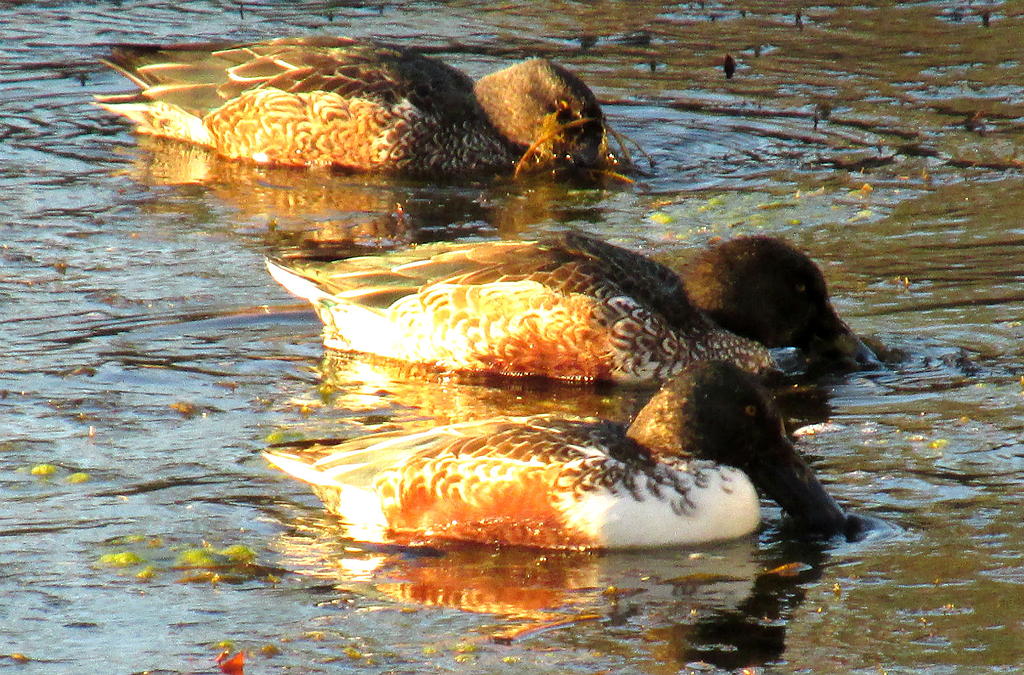
In the reed beds, Brown-cheeked Rail and Common Moorhen can be seen or heard, and just occasionally a rare crake — Ruddy-breasted Crake or Baillon's Crake — turns up.
Passerines include Common Reed Bunting, Masked Bunting, Japanese Bush Warbler and Daurian Redstart.
Homepage: https://www.jnto.go.jp/eng/spot/gardens/kasairinkaikoen.html
https://www.tokyo-park.or.jp/english/park/detail_02.html
Birds to look for include: grebes, ducks, gulls, thrushes, and Azure-winged Magpie.
Tokyo Port Wild Bird Park 東京港野鳥公園
Tokyo Port Wild Bird Park (Tel: 03-3799-5031; https://whereintokyo.com/venues/25307.html; http://www.tptc.co.jp/cms/tptc/park/pages/park/03_08/pamphlet_en.pdf; Map: 35.583948, 139.760319)
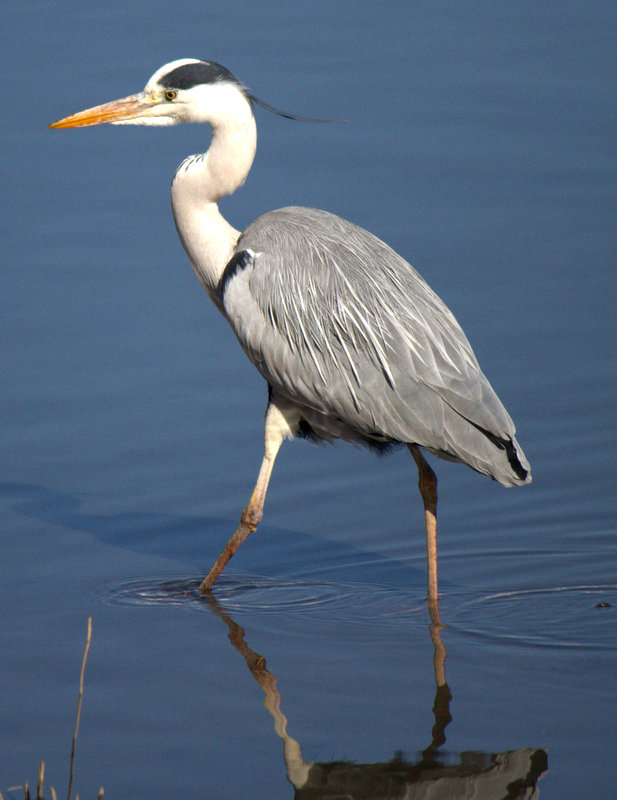 This birding spot is located close to Haneda International Airport, and can be reached by public transport. Vehicle parking facilities are available at the adjacent Oi produce market.
This birding spot is located close to Haneda International Airport, and can be reached by public transport. Vehicle parking facilities are available at the adjacent Oi produce market.
Surrounded by warehouses, the nearest landmark is Oi produce market, the nearest station is Ryutsu Center on the Tokyo Monorail line, and there are buses from both JR Shinagawa and Omori stations.
Despite the hustle and bustle of delivery trucks at the adjacent market, container trucks from the docks and the noise of planes taking off from Haneda International Airport, the park is a good and often rewarding destination during a day-trip from the city centre or if you have a lay-over at the airport.
Located on the west side of Tokyo Bay, in the southeast corner of the capital, Tokyo Port Wild Bird Park offers a variety of habitats: several ponds, a few areas of reeds, some bushes and trees, and a park/garden area.
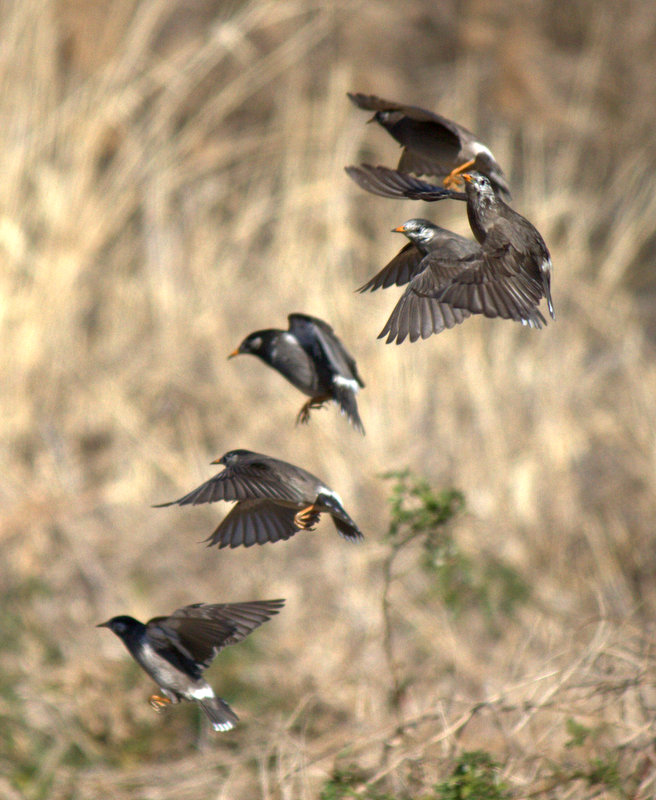 It is open from 09:00 until 17:00 between February and October, and 09:00 until 16:30 in November, December and January. After the entrance (where fees are charged for adults, seniors or schoolchildren) there are several hides (blinds) from which to watch or photograph birds, together with a visitor centre which looks out over a large pool. All of them are equipped with telescopes.
It is open from 09:00 until 17:00 between February and October, and 09:00 until 16:30 in November, December and January. After the entrance (where fees are charged for adults, seniors or schoolchildren) there are several hides (blinds) from which to watch or photograph birds, together with a visitor centre which looks out over a large pool. All of them are equipped with telescopes.
The park is administered by the Wild Bird Society of Japan, and there are rangers and volunteers on hand (some of whom speak English) to help with bird identification.
There is no restaurant at the park, so it is necessary to take your own food, but there are vending machines selling drinks. Toilet facilities are available at the entrance and inside the visitor centre, and there are benches and tables to sit at if the weather is nice and you want to sit outside and enjoy a picnic..
Birds to look for include the typical species that can be found in the Tokyo area: Japanese Crow, Azure-winged Magpie, Brown-eared Bulbul, Eurasian Tree Sparrow and White-cheeked Starling.
During winter, several species of ducks are present, as well as Eastern Buzzard, Northern Goshawk, Common Snipe, Brown-cheeked Rail (Eastern Water Rail) and sometimes Eurasian Bittern.
During the spring and autumn migration seasons, various shorebirds drop in around the ponds, including Grey-tailed Tattler, Little Ringed Plover, Mongolian Plover and Bar-tailed Godwit.
Various rarities found here over the years have included Asiatic Dowitcher and Long-tailed Shrike.
Access:
From Shinagawa Station, go to the bus stops at the east (Konan) exit. From either the #1 or #2 stops, take the No. 98 ( 品 98) bus to the final stop, which is Ota market north (Ota-shijo-kita 大田市場北). This stop is close to the bird park, at the Yacho-koen Higashi intersection. From the stop walk about 500 m west to the entrance. Another bus departs from JR Omori Station, bound for the produce market. Get off at the final stop, Ota-Shijo. The bird park is a five-minute walk from the market.
 Most Tokyo Monorail trains (but not express trains!) from either JR Hamamatsucho Station in central Tokyo or Haneda International Airport (both domestic and international terminals) stop at Ryutsu Center Station, from where it is about a 20-minute walk.
Most Tokyo Monorail trains (but not express trains!) from either JR Hamamatsucho Station in central Tokyo or Haneda International Airport (both domestic and international terminals) stop at Ryutsu Center Station, from where it is about a 20-minute walk.
Ryutsu Center Station-Wild Bird Park walking map information: https://www.google.co.jp/maps/dir/35.582127,139.749008/Tokyo+Port+Wild+Bird+Park,+3-1+Tokai,+大田区+Ota+City,+Tokyo+143-0001/@35.5841271,139.7565892,51m/data=!3m1!1e3!4m8!4m7!1m0!1m5!1m1!1s0x601861905d41ecdb:0x34de616de85136f0!2m2!1d139.7603075!2d35.5838724?hl=en
Alternatively, take a bus from Omori Station and get off at Ota-Shijo. The bird park is a five-minute walk from the market.
Ota Flower Market: Map 35.588742, 139.765966
Bird park entrance: Map 35.584389, 139.759293
Nature centre: Map 35.581955, 139.764851
Tokyo Monorail Ryutsu Centre Station: Map 35.582127, 139.749008
Website: http://www.wildbirdpark.jp/en/
Mount Takao 高尾山
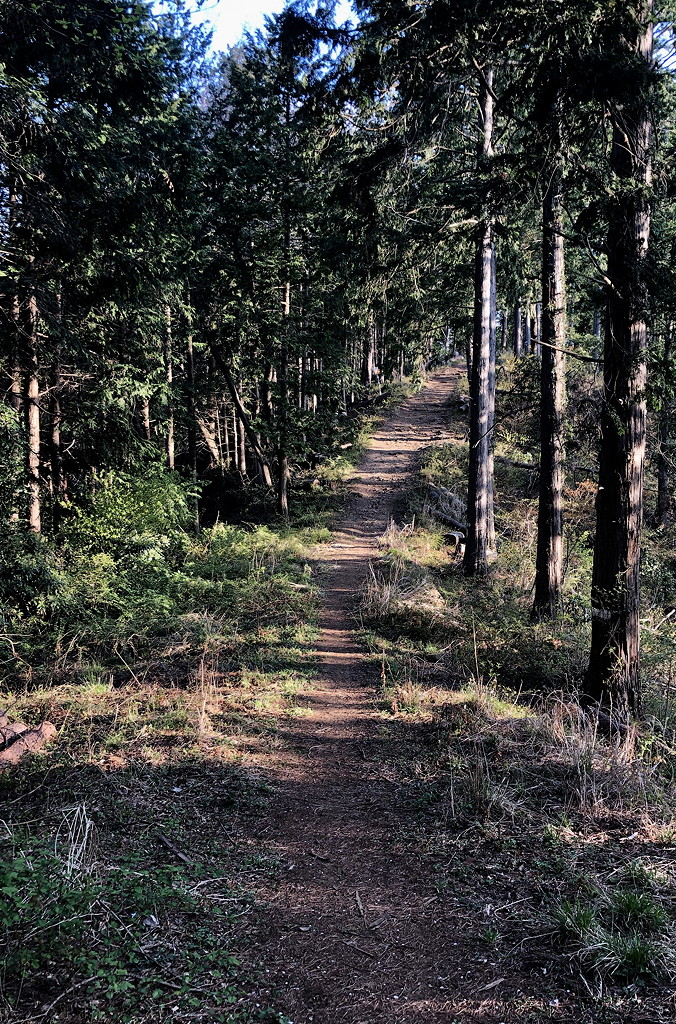 Mt Takao – at 599 metres high it's not so much a mountain as a high hill – lies just over 50 km to the west of Shinjuku, one of the main sub-centres of Tokyo.
Mt Takao – at 599 metres high it's not so much a mountain as a high hill – lies just over 50 km to the west of Shinjuku, one of the main sub-centres of Tokyo.
Take a Keio Line train from Shinjuku Station to the end of the line at Takao-san-guchi (about 60 minutes by express). Follow people to the plaza where there you will find the cable car station entrance/gift shops. There is a detailed hiking map of Takao-san here from where you can choose your trail. Walk the many trails to the top — but note that the main trails will be crowded (and hence mostly birdless) at weekends.
It takes about an hour to travel there by direct express train on the Keio Line from Shinjuku Station (the Keio Line is connected to/signposted at JR Shinjuku Station), and from Takaosanguchi Station (the final stop) it is about a 10-minute walk to the plaza at the base of the mountain.
From Takaosanguchi Station turn right and follow fellow hikers to Momiji Square plaza, where you will find the cable car station entrance, toilet facilities and entrances to the hiking trails. There is a detailed hiking map of Takao-san there, from where you can choose your trail.
There are several routes to the top, but as Takao-san is close to the capital and as there is a well-known temple —Yakuo-in – halfway up, these can become very crowded, especially at the weekend, on national holidays and around New Year.

It is also a very popular hiking spot – the crowds assembled at the plaza during the peak hanami (cherry-blossom) or autumn colour-viewing seasons have to be seen to be believed – so there is never any shortage of people in the area. Fortunately, however, most of these day-trippers and hikers keep to the main trails and stay close to the temple and summit.
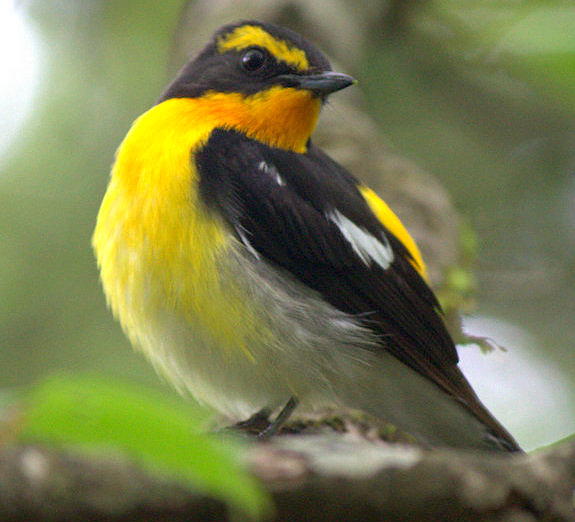 At Takaosanguchi Station pamphlets with maps are available in English, Korean, Chinese and of course, Japanese, and signboards have been set up in different places with trail maps and other information (mostly in Japanese).
At Takaosanguchi Station pamphlets with maps are available in English, Korean, Chinese and of course, Japanese, and signboards have been set up in different places with trail maps and other information (mostly in Japanese).
From the plaza at the base of Takao-san, there are a number of trails to choose from, as well as a cable car and a chair lift. Neither of the latter go to the summit, but for those who prefer to miss out some of the steeper parts, this is the way to go.
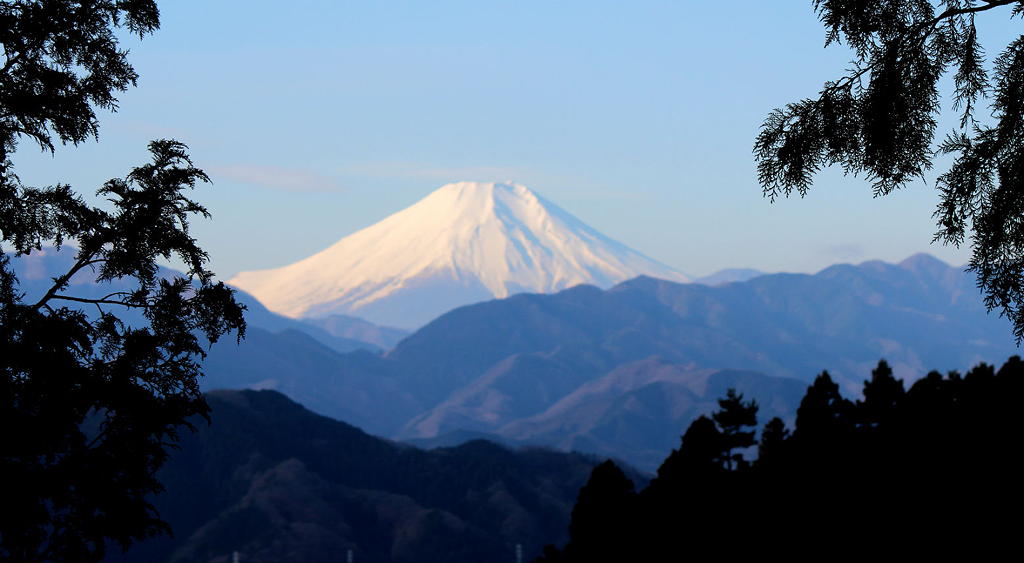 Another popular trail follows the service road up to the summit (there is no access for private vehicles).
Another popular trail follows the service road up to the summit (there is no access for private vehicles).
One of the better trails to ascend is No. 6. This trail begins just before Takao Hospital, which is reached by walking for about 15 minutes up the road behind the cable car station. The trail entrance is on the left side of the road below the hospital, and about 75 metres after the collection of red-hatted jizo statues at a small shrine next to a stream.
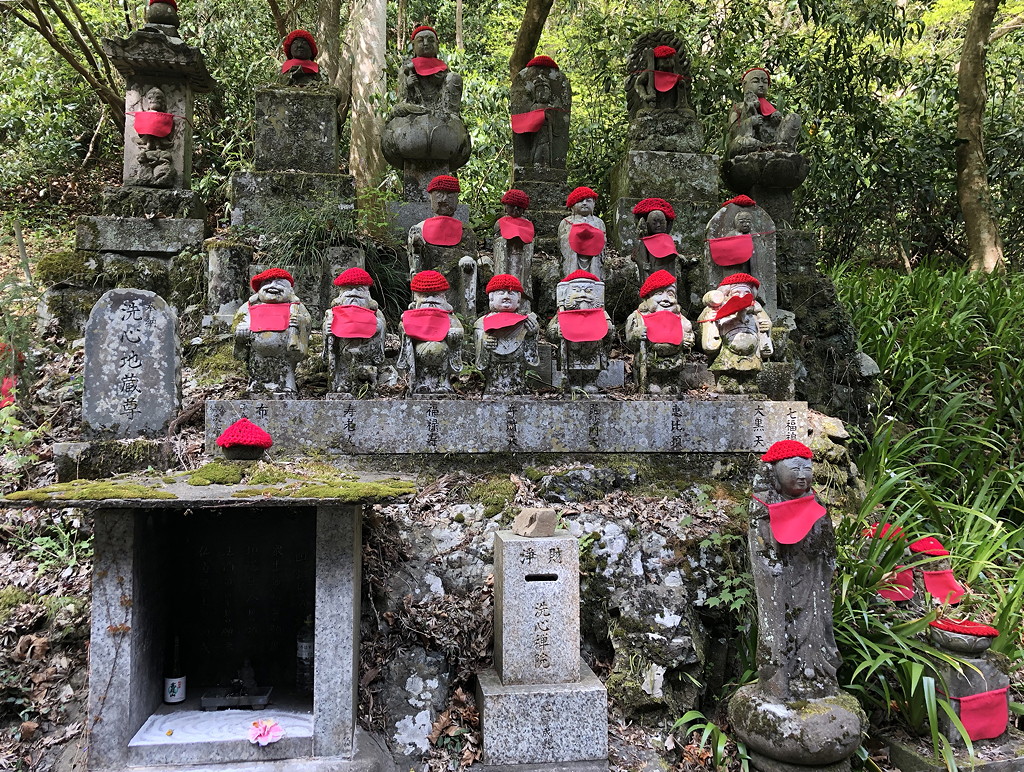
No. 6 trail follows the stream valley and exits at a junction onto the well-used Inariyama Trail. From that junction, it is about another 20 minutes or so up to the summit. It takes about an hour to hike up from the plaza to the Inariyama Trail junction.
In this cool and sheltered valley during the summer months three species of flycatcher (Blue-and-white Flycatcher, Narcissus Flycatcher and Japanese Paradise Flycatcher) can be seen, as well as Japanese Green Woodpecker and Japanese Grosbeak. White-bellied Green Pigeon can sometimes be heard. Eastern Crowned Warbler is usually present, as is Asian Stubtail.
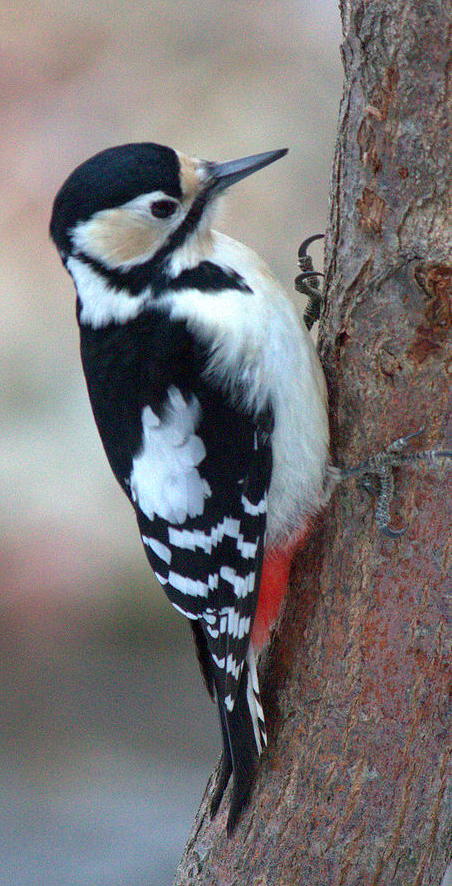 During the winter months around Takao-san, three species of woodpecker (Great Spotted Woodpecker, Japanese Green Woodpecker and Japanese Pygmy Woodpecker) can usually be found, and White-backed Woodpecker is an occasional visitor. Other birds that may be seen during this season include Daurian Redstart, Red-flanked Bluetail, and Grey Bunting and occasionally Japanese Accentor are there. Non-native species include Chinese Bamboo Partridge, Chinese Hwamei and Red-billed Leiothrix.
During the winter months around Takao-san, three species of woodpecker (Great Spotted Woodpecker, Japanese Green Woodpecker and Japanese Pygmy Woodpecker) can usually be found, and White-backed Woodpecker is an occasional visitor. Other birds that may be seen during this season include Daurian Redstart, Red-flanked Bluetail, and Grey Bunting and occasionally Japanese Accentor are there. Non-native species include Chinese Bamboo Partridge, Chinese Hwamei and Red-billed Leiothrix.
Surprisingly, in such a large forested area, raptors seem to be few and far between, but occasionally Eastern Buzzard, Eurasian Sparrowhawk or Northern Goshawk can be seen, and in the summer listen for the calls of Japanese Lesser Sparrowhawk. Grey-faced Buzzard sometimes occur on migration.
Beyond the summit of Takao-san, to the northwest, is Shiroyama, and there is a nice hiking trail connecting Takao with Shiroyama and Jinba-san.
The hike from Takaosanguchi Station to Jinba-kogen-shita bus stop, about 20 km in total, takes five or six hours, and passes through mixed – but mostly Japanese Cedar – forest. At both the summit of Takao-san and Jinba-san and also at Icchodaira, uninterrupted views across to Mount Fuji can be obtained, especially on clear and cold winter days.
Snow is always a possibility along this trail in late winter, so be prepared if it has snowed a day or two before your visit, or if snow is forecast.
From Jinba-san picnic area (look for Japanese or Mountain Hawk-Eagle soaring over the surrounding ridges) descend to Jinba-kogen-shita bus stop and from there take the bus back to JR Takao Station. Once back at the station you can take the Chuo line train directly back to Shinjuku or, from the adjoining Keio Takao station, the Keio line train offers a slightly cheaper alternative back to Keio Shinjuku Station.
About 2 km away on the west side of Takao-san is Icchodaira. Here, there is a shelter and an observation platform from where you can look out towards the mountains of Tanzawa and also, on a clear day, see Mount Fuji rising majestically on the horizon. Far away to the northwest the southern peaks of the South Alps can just be seen far away in Yamanashi Prefecture.
Toilet facilities are available near the picnic area just below Icchodaira and at Shiroyama peak (less than 1 km northwest of Icchodaira).
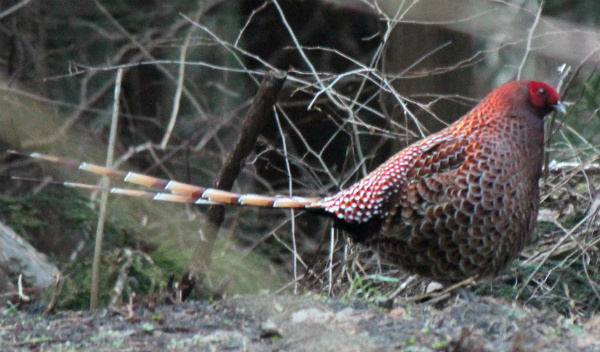 The area around Icchodaira is one of the best places near Takao-san where it is sometimes possible to hear, and more rarely to see, Copper Pheasant.
The area around Icchodaira is one of the best places near Takao-san where it is sometimes possible to hear, and more rarely to see, Copper Pheasant.
This species is very secretive but if you walk quietly along the trails towards Shiroyama or south towards Odarumi-toge, there is a chance that you will be able to hear a male drumming, especially if you are there soon after dawn on a calm day.
Seeing this shy bird is another matter altogether, but you might get lucky and find one as it crosses the hiking trail, or perhaps flush one as it feeds beside the pathway.
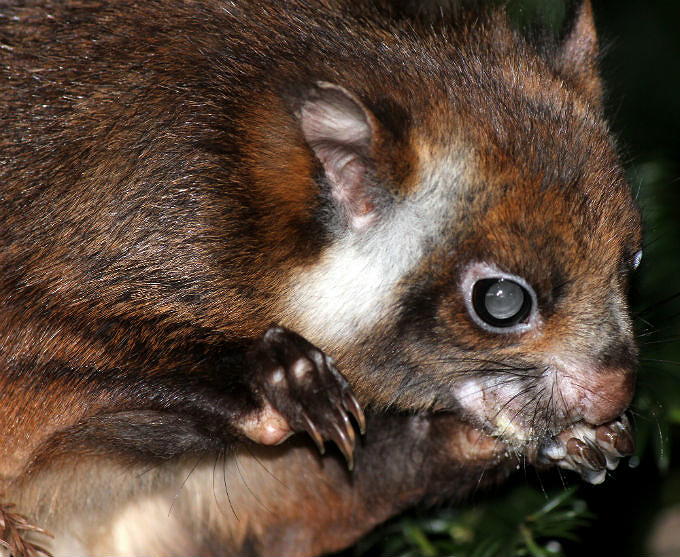 Another attraction at Takao-san is a "night safari", the main purpose for which is to look for the Japanese Giant Flying Squirrel. The most reliable place to find this mammal is in the huge sugi (Japanese Cedar) trees around Yakuo-in temple and, if you are lucky, you may see one as it glides between the trees.
Another attraction at Takao-san is a "night safari", the main purpose for which is to look for the Japanese Giant Flying Squirrel. The most reliable place to find this mammal is in the huge sugi (Japanese Cedar) trees around Yakuo-in temple and, if you are lucky, you may see one as it glides between the trees.
The best way to locate them is to listen for their calls – a quite loud, but short chattering, or another machinegun-like call which sounds like something straight out of a computer game!
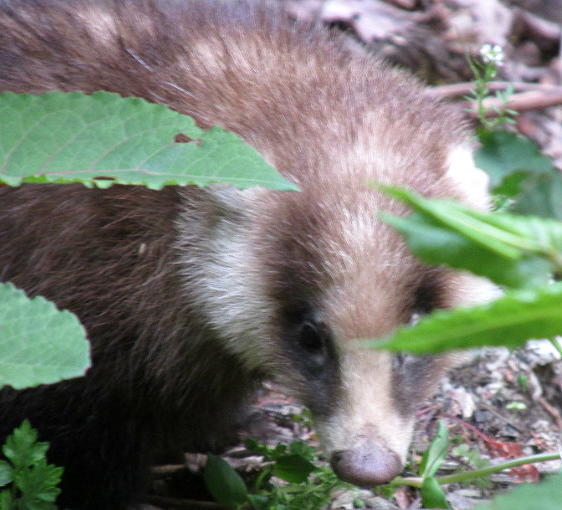 Other species that can be seen include Tanuki (Raccoon Dog), Japanese Badger, Japanese Marten, Wild Boar and Striped Palm Civet. In recent years there have been reports of Asiatic Black Bear around Icchodaira, but this species is not normally in the area. Just occasionally, Japanese Macaques can be found in the areas further to the west of Takao-san.
Other species that can be seen include Tanuki (Raccoon Dog), Japanese Badger, Japanese Marten, Wild Boar and Striped Palm Civet. In recent years there have been reports of Asiatic Black Bear around Icchodaira, but this species is not normally in the area. Just occasionally, Japanese Macaques can be found in the areas further to the west of Takao-san.
As you walk past streams during the spring, you might hear the pig-like grunts and squeals of Tago's Brown Frog, coming from inside small holes.
For plant lovers, out of several hundred different types of trees, bushes and flowers, two species that are of interest at Takao-san are Carrot Fern Orchid (Sekkoku: Dendrobium moniliforme), which grows on certain cedar trees in the stream valley along Route #6, and Takao Violet (Takao-sumire: Viola yezoensis f. discolor).
At the summit of Takao-san, a visitor centre has information about hiking trails and wildlife that can be seen, and next door there is also a small restaurant. There are also vending machines as well as toilet facilities. Drinking water is available, and there are a number of benches and tables where you can rest or have a picnic.
Additional toilet facilities are available at Yakuo-in Temple, at the cable car and chair lift stations in the plaza and also near Icchodaira.
Another option is to do the hike in reverse. Take a bus from JR Takao Station to Jinba-kogen-shita (about 45 minutes), hike to the top of Jinba-kogen, then follow the signposted trail back to Takao-san and down to Takaosanguchi Station. Allow six or seven hours in total for this.
An alternative is to take a bus from outside JR Takao Station as far as Hikage bus stop, follow the mountain road up to Shiroyama, then turn southeast and head to Icchodaira, on to the summit of Takao-san and finally back down to Takaosanguchi Station.
Birds to look for include: Japanese Green Woodpecker, Copper Pheasant, Japanese Grosbeak, White-bellied Green Pigeon, and buntings. In summer: Japanese Paradise Flycatcher, Blue & White Flycatcher and Narcissus Flycatcher, Asian Stubtail and Eastern Crowned Warbler.
Here and there you will find the ubiquitous vending machines, and there is a convenience store,an Italian restaurant and an onsen (hot spring) at Takaosanguchi Station. At the plaza there are the obligatory gift shops plus a couple of soba noodle restaurants.
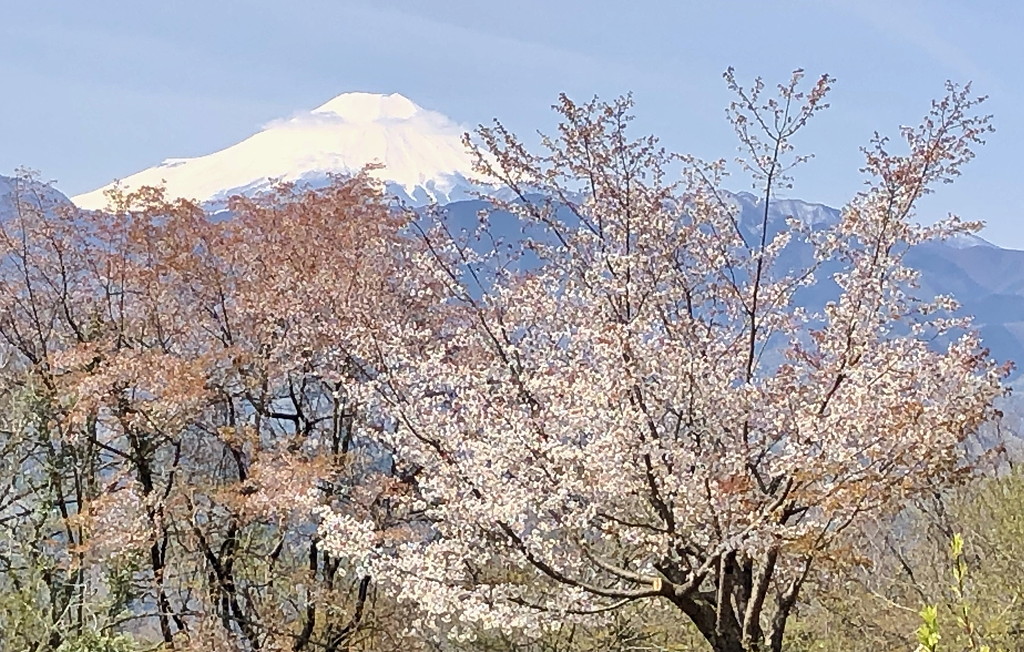
Access:
Ride a Keio Line train from Shinjuku Station to the end of the line at Takaosanguchi Station. Alternatively, you can take a JR Chuo Line train from Tokyo or Shinjuku stations to JR Takao Station, and transfer there to the Keio Line train and go one stop to Takaosanguchi Station. It takes about an hour by direct express train from Keio Shinjuku Station (the Keio Line is connected to/signposted at JR Shinjuku Station).
Takao Visitor Center:
https://www.kankyo.metro.tokyo.lg.jp/naturepark/english/know/shisetsu/visitorcenter/takao.html
Keio Takao-san Information:
https://www.keio.co.jp/english/sightseeing/takao.html
Map information: Icchodaira: 35.626279, 139.227659
http://takaovc599.ec-net.jp/07english/0701english.html
http://www.takaosan.or.jp/english/
Tama River 多摩川 (Tama-gawa) at Marukobashi
A convenient site for Tokyo-, Kawasaki- or Yokohama-based birders, is the Tama River (Tamagawa). It forms the dividing line between Tokyo and the city of Kawasaki, in Kanagawa Prefecture, and is easily reached by public transport.
There are several birding spots along the course of the river: In the mountainous western reaches, Crested Kingfisher and Brown Dipper can be found. In west Tokyo, a popular birding spot is near Seisekisakuragaoka Station, in Tama City; this is described in the following section. In Ota-ku, in south Tokyo, the area around Maruko Bridge (Marukobashi 丸子橋) can be quite birdy during the winter.
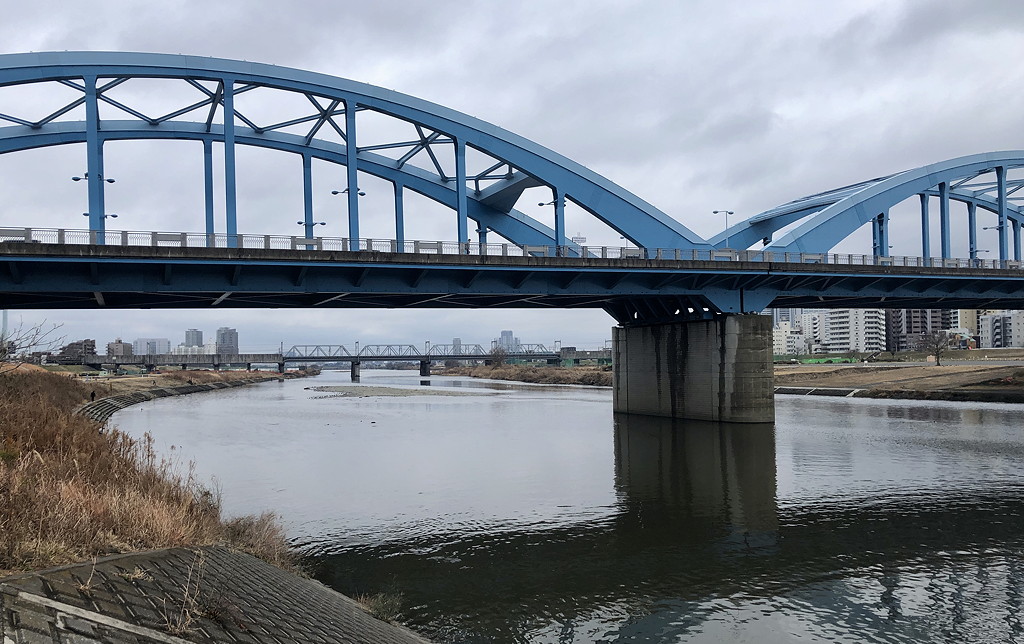
At low tide, and when suitable muddy habitat is available on the south side where it enters Tokyo Bay, several species of shorebirds including Grey-tailed Tattler, Whimbrel, Red-necked Stint, Ruddy Turnstone and Dunlin are possible during spring and autumn migration seasons. The estuary also attracts an interesting array of waterbirds during the winter months.
The sides of the river have been mostly leveled as part of a flood prevention program and turned into sports fields, but in several places trees, bushes and a tangle of weeds grow. All of these can attract birds, so it is definitely worth taking time to explore the area.
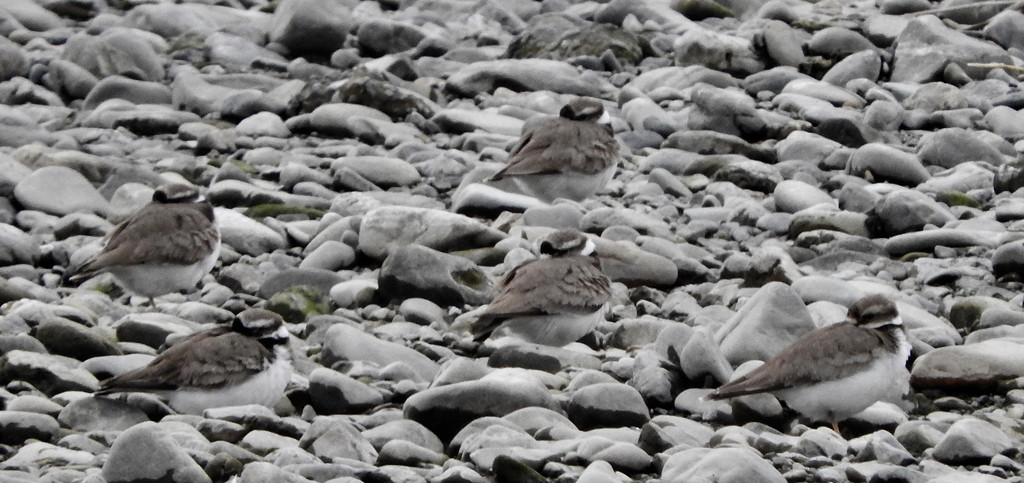 On any of the many gravel islands in the river itself, look for the well-camouflaged Long-billed Plover, especially during the winter months. However, due to the number of people who use the river and its edges for exercise and recreation, there is a certain amount of disturbance so the plovers and other birds are forced to move around.
On any of the many gravel islands in the river itself, look for the well-camouflaged Long-billed Plover, especially during the winter months. However, due to the number of people who use the river and its edges for exercise and recreation, there is a certain amount of disturbance so the plovers and other birds are forced to move around.
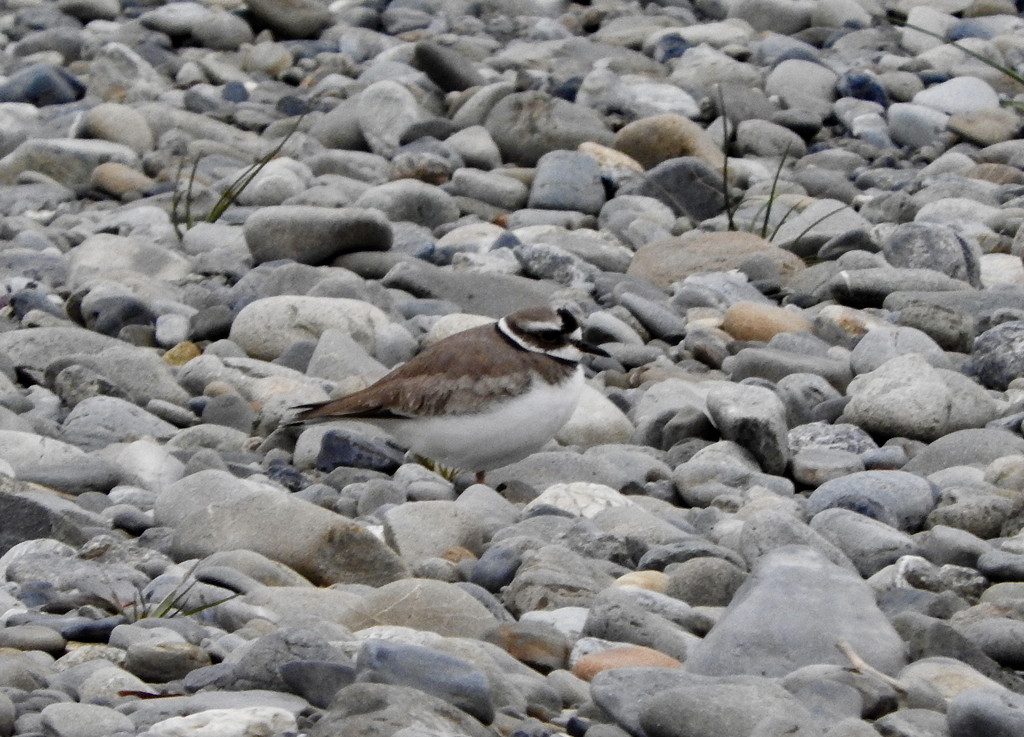 During the winter several species of ducks, such as Eurasian Wigeon, Northern Pintail, Gadwall and Eurasian Teal, can be seen. Overhead, keep your eyes open for any birds of prey, such as Black-eared Kite, Northern Goshawk, Eastern Buzzard and Peregrine Falcon.
During the winter several species of ducks, such as Eurasian Wigeon, Northern Pintail, Gadwall and Eurasian Teal, can be seen. Overhead, keep your eyes open for any birds of prey, such as Black-eared Kite, Northern Goshawk, Eastern Buzzard and Peregrine Falcon.
Past rarities along the river have included Bonaparte's Gull, Roseate Tern, Caspian Tern, and Fieldfare.
Access:
From Yokohama or Kawasaki take the Keikyu Daishi Line and get off at the final stop – Kojimashinden Station. The river mouth is about a 15-minute walk north towards Tamagawa Ryokuchi Park.
In south Tokyo Tamagawa Station, close to Marukobashi, is served by three train lines: Tokyu Toyoko Line (from Shibuya or Yokohama), Tokyu Meguro Line and the local Tokyu Tamagawa Line.
Map Details: 35.58604242235481, 139.668905821407 (Marukobashi)
Tama River (Tama-gawa) at Seisekisakuragaoka
聖蹟桜ケ丘 多摩川
This is an easily visited birding site , especially if you are staying in the Shinjuku area or in the western suburbs of Tokyo. If you have the time and are feeling energetic, a visit to this site can be combined with a hike at Mt Takao, which is approximately 30-minutes away to the west on the same train line.
From Seisekisakuragaoka Station, on the Keio Line, it is no more than a 20-minute walk to the river.
About 100 m downstream from the Keio Line railway bridge there are some steps at Sekido which give access to the top of the riverbank. From here you can walk along the south side of the river for about 1 km downstream or for about the same distance upstream.
Along the side of the river there are various sports venues – baseball fields, tennis courts, football pitches – and there are cycling and walking paths running along both north and south banks.
A suggested route is to go to the Keio Line bridge, then walk downstream as far as an observation hut about 400 m east of Sekido road bridge. Walk under the bridge and along the side of the river for a short distance, and over to your right you can see the wooden hut built on a point of land where the smaller Okuri River merges into the larger Tama River.
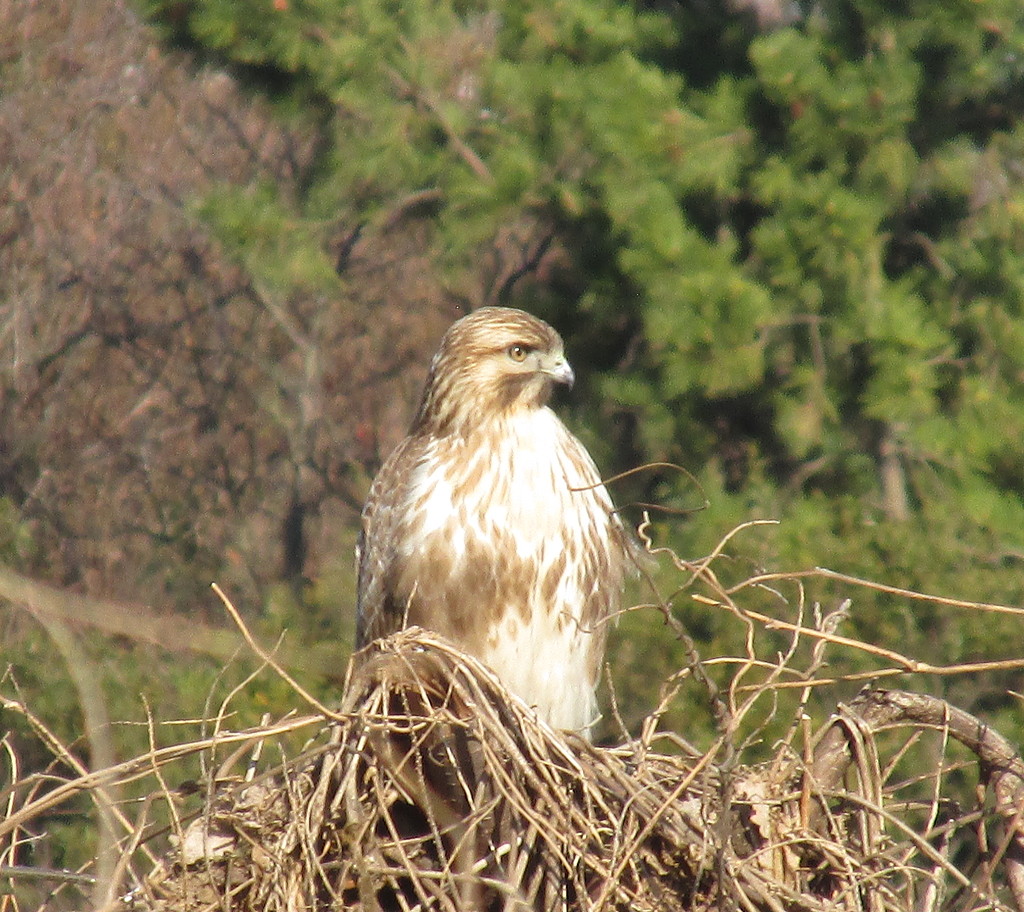 This is a kind of observation hide or shelter, built a few metres above the surrounding land. During the winter months it is a popular spot with local bird photographers who gather beside it to watch for birds of prey, especially Northern Goshawk, Peregrine Falcon and Eastern Buzzard flying over.
This is a kind of observation hide or shelter, built a few metres above the surrounding land. During the winter months it is a popular spot with local bird photographers who gather beside it to watch for birds of prey, especially Northern Goshawk, Peregrine Falcon and Eastern Buzzard flying over.
Just across the road from the shelter is a traffic safety training area, where children can learn to ride bicycles, and be taught the basic rules about road safety, traffic lights and crossing points. There are toilet facilities here, but please ask permission to use them.
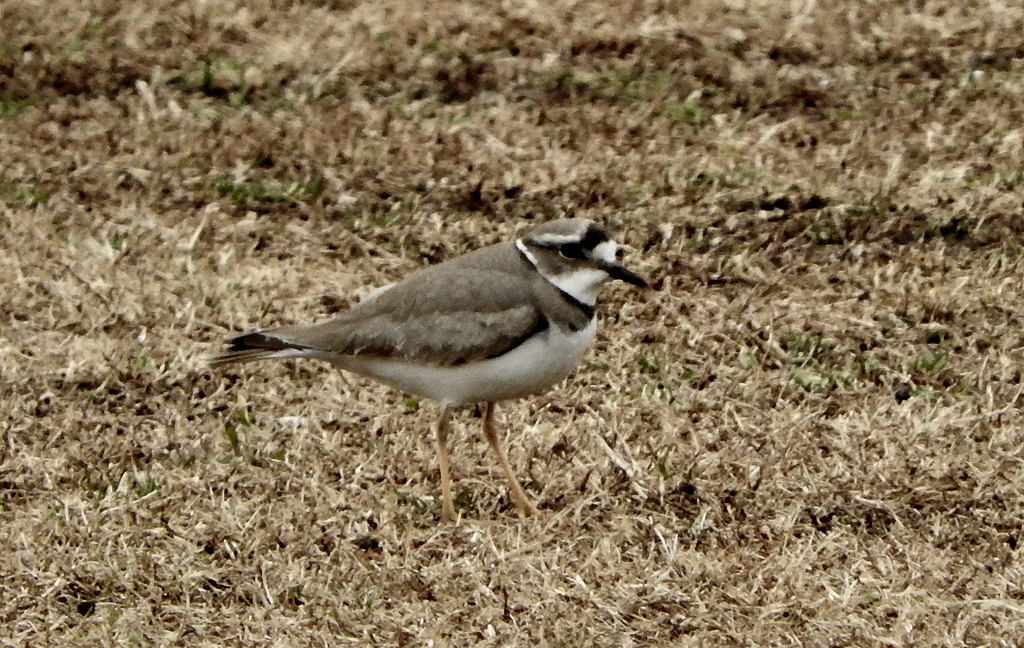 As you walk along beside the river, watch and listen for Long-billed Plover on any gravel patches in the river. They are hard birds to find when just sitting motionless among the stones, but when they are displaying – on a calm late winter or spring day – at least they are easier to locate.
As you walk along beside the river, watch and listen for Long-billed Plover on any gravel patches in the river. They are hard birds to find when just sitting motionless among the stones, but when they are displaying – on a calm late winter or spring day – at least they are easier to locate.
The gravel patches are also good places to look for Japanese Wagtail and Buff-bellied Pipit, while the scrubby and overgrown sides attract a variety of buntings: Meadow Bunting, Masked Bunting and Rustic Bunting are the commonest, but there could also be Common Reed Bunting or Chestnut-eared Bunting, too, especially in the winter. During the winter months could also be Daurian Redstart or Long-tailed Rosefinch in this habitat.
During summer the grating songs of Oriental Reed Warbler can be heard from the bushes and tall grasses on the midstream islands, and sometimes Zitting Cisticola can be heard as well. Japanese Green Pheasant is resident, but the male's call is much more likely to be heard as they, too, tend to remain on the islands, away from human activity.
There's no shortage of people exercising, riding bikes, playing brass instruments or cellos, kicking or hitting balls of various sizes in the open air beside the river!
When you are finished and return to Seisekisakuragaoka Station, there is a large supermarket there, plus a variety of restaurants and coffee shops as well as toilet facilities.
Access:
From Keio Shinjuku Station take a Keio Line train to Seisekisakuragaoka Station (about 30 minutes by express train or 45 minutes on a local train). The Tama River is about a 15-minute walk to the northeast – you can see it when the train crosses over the river just before it reaches Seisekisakuragaoka Station.
From Shibuya, take a Keio Inokashira Line train to Meidaimae Station and change there to the Keio Line.
Map Details:
Steps at the top of the river bank, on the east side of the Keio rail bridge: 35.652595, 139.452061
Observation hut downstream from Sekido road bridge: 35.649701, 139.464163
© 2021 Mark Brazil & Chris Cook
Last updated: 20210209

